 Links and other bits for the second month of 2020.
Links and other bits for the second month of 2020.
– The Fashion History Museum had a very helpful post that translated some new research on the history of beauty patches.
I guess if the FDA won't thoroughly regulate beauty products, it's up to retailers. Sephora announced new standards for CBD-infused products sold at their stores, which they hope will build customers' knowledge and trust in CBD products. I suppose it's a good thing but I still say most "clean beauty" stuff is a lie – I cannot roll my eyes any harder at Sephora's "Clean Beauty" section.
– '90s nostalgia continues full force in the beauty arena with Salt n Pepa's collection for Milani.
– I think black history should be incorporated year-round and so many magazines tend to highlight the same histories each February, but Allure went outside the box and brought the work of this beauty vlogger to my attention. (Note to self: figure out what the hell TikTok is.)
– Makeup continues inching along towards accessibility for everyone thanks to Guide Beauty, founded by a makeup artist who was diagnosed with Parkinson's.
– Jezebel highlights a trans beauty clinic in New York. *insert applause here* I am not, however, applauding the rise of beauty products intended for women's nether regions. As if we haven't grown up with enough shame about our lady bits.
– Last month it was F-beauty, this time it's C-beauty. Although unlike predictions for other countries, I can definitely see Chinese beauty brands taking off, or at least, they're on my radar to add to the Museum's collection – I know a handful are offering some truly amazing embossed products.
– Speaking of acquisitions, I'm really pleased with how the Museum's vintage Lancôme collection is coming along. How perfect are these cheeky little cherubs for Valentine's Day?
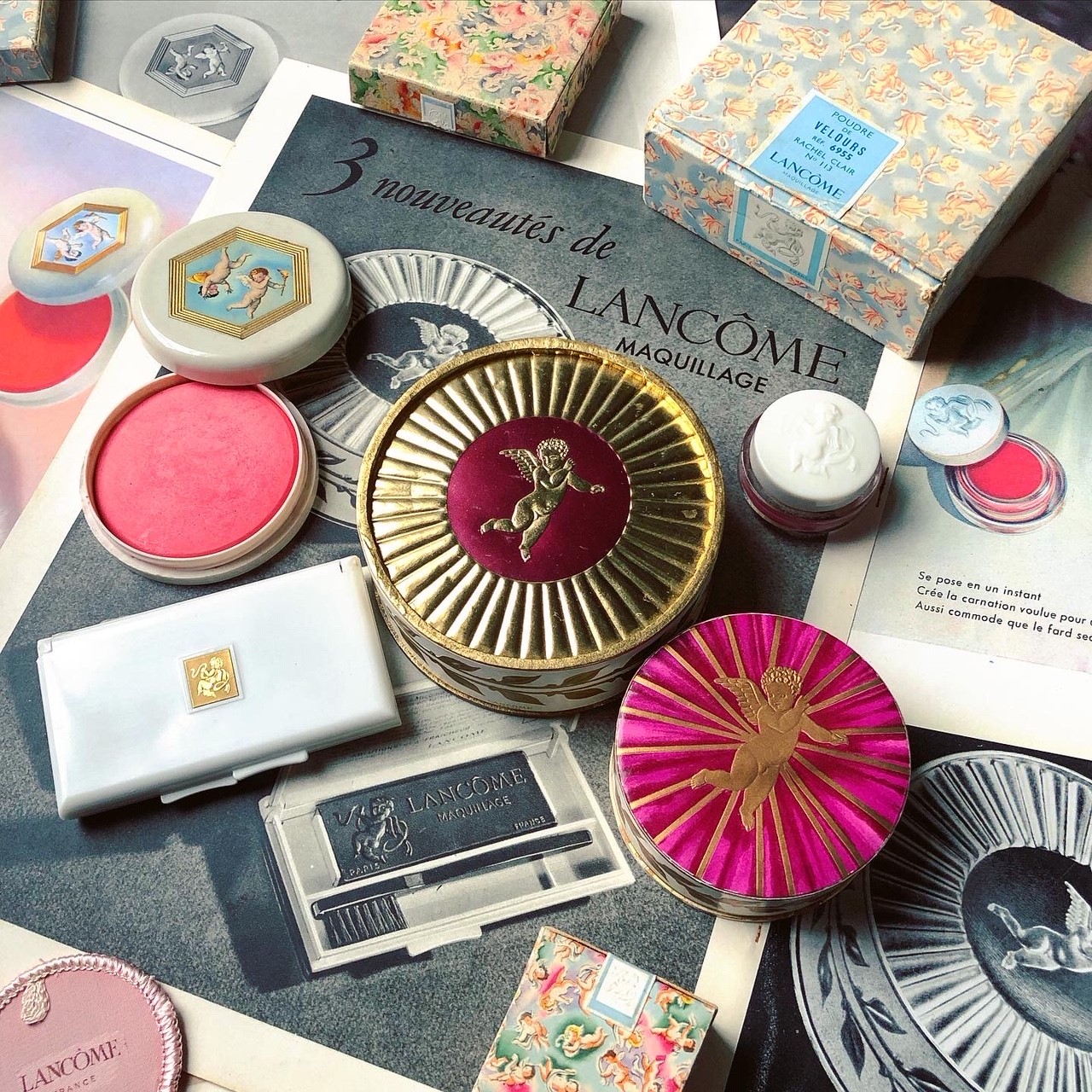
The random:
– Two of the Curator's favorite TV shows returned in February, woohoo!
– An exhibition on Christian Louboutin sounds fantastic, and I must figure out how to incorporate a virtual tour for the Museum's exhibitions.
– In other museum news, I'm working on more MM Musings posts about diversity, inclusion and social change. The amount of resources I've found so far is making my head spin, but I'm determined to give myself a crash course in these areas and figure out an action plan for the Makeup Museum.
– I managed to take a very quick trip to NYC to visit the Anna Sui show at the Museum of Art and Design, which was fabulous. My love for the '90s has never been stronger.
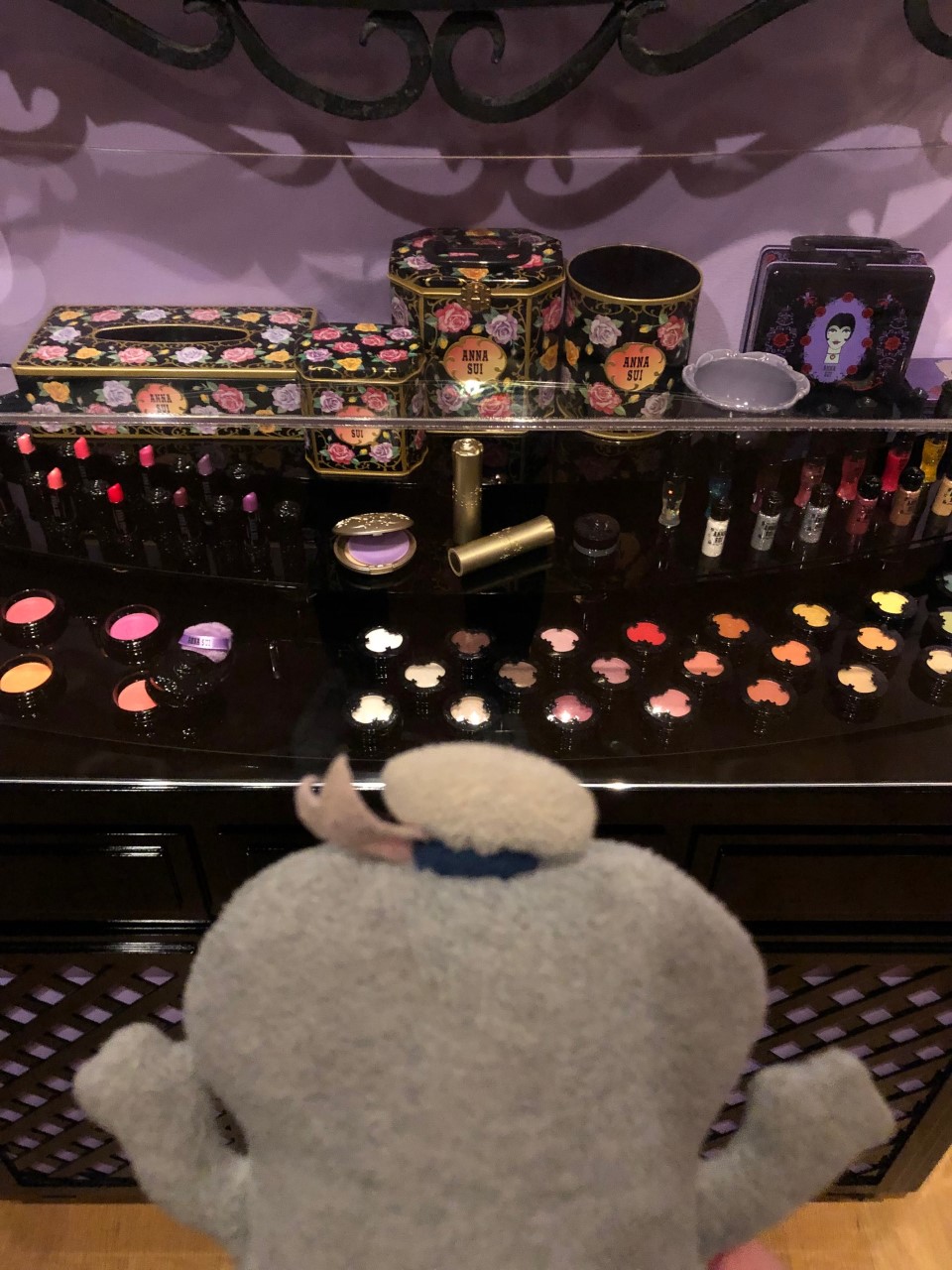
How are you? Did you do anything fun in February?
I have so many other books I'd like to review but so little time, and this tome had been sadly collecting dust on my nightstand for ages, so here's a quick review for a quick read.* Lipstick: A Celebration of the World's Favorite Cosmetic by Jessica Pallingston was released in 1998, just a few months prior to Meg Cohen's Read My Lips: A Cultural History of Lipstick which I reviewed in 2015 and vowed to compare it to Pallingston's book shortly thereafter (in other words, I'm a mere 5 years overdue for that task. Sigh.) Anyway, I found the two books to be more or less the same in terms of content. This isn't necessarily a bad thing, but I think if you were looking for a basic history of lipstick you could choose one or the other and not feel like you're missing out.
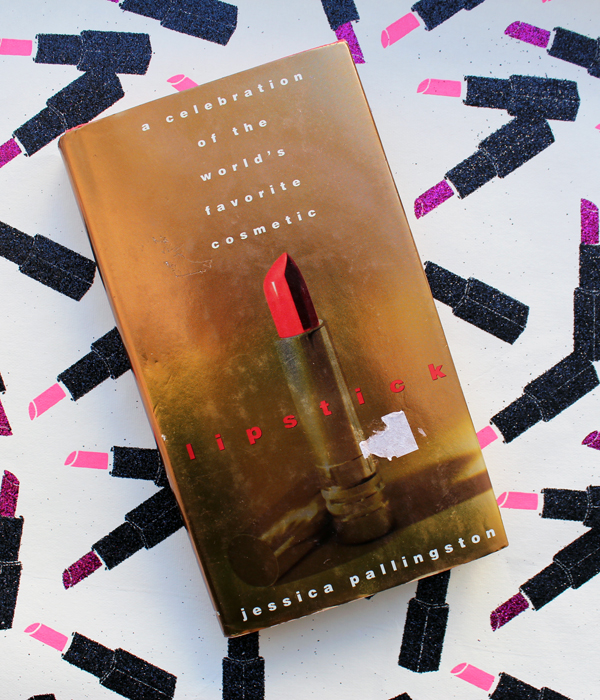
The introduction left a bit to be desired, as it placed emphasis on lipstick as a tool to either "empower" women or lure men; there was no mention of playing with color as a means of self-expression. I also think, as I did with Cohen's intro, that the fetishization of lipstick and the overblown description of its alleged power were a bit much. Lipstick can be life-changing, yes, but proclamations like "Lipstick is a primal need" made me roll my eyes.
Like Cohen's book, the first chapter is a brief overview of the cultural significance of lipstick throughout history, starting with ancient times and ending with the 1990s. Not a bad summary, but since I've been doing this a long time there was little earth-shattering news. This isn't the author's fault, however, as the book was released over 20 years ago so this sort of information wasn't as ubiquitous as it is now. Containing the standard tidbits about ancient Greek prostitutes and the patriotic duty lipstick served during World War II, the chapter is a tidy summation of how lipstick was worn through the ages. But the section on the '90s penchant for brown lipstick nearly made my eyes pop out of my head, as I had never come across theories about why brown lipstick (and brown in general) was so popular. This will definitely inform my research for my '90s beauty history book!
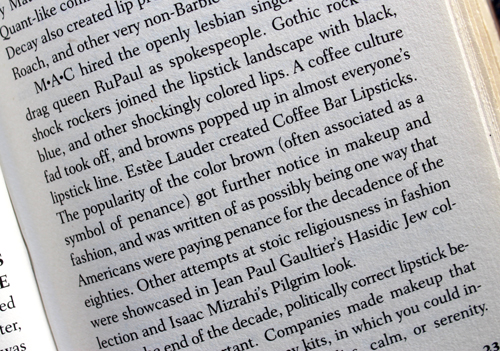
Chapter 2 presents no fewer than 14 theories outlining why lipstick wields more impact than other cosmetics. I found them to be slightly lacking, as I believe the "lipstick as phallic object" or "painted lips mimicking sexual arousal" theories rather tired at this point, not to mention sexist. Ditto for the idea that children feel more protected if their mother leaves a lipstick print as they kiss them goodbye before school, lipstick application as oral fixation, or as a rite of passage for teenage girls. There was some truth to the theory about lipstick as a sort of armor or camouflage, but seeing no mention of how lipstick fits into the larger notion of makeup as a means of self-expression was disappointing. And I would have liked to see more about makeup's transformational power, but the only theory about lipstick as metamorphosis came in the form of fairy tales, i.e. one's wildest dreams come true through makeup and one will magically become "pretty" if they wear it: "When I put on lipstick I am as pretty as Cinderella" was one of the quotes included. (Why is the author quoting a literal 5 year-old?)
Chapter 3, appropriately titled Lipstick Freud, delves into pop psychology as Pallingston takes us through the various lipstick shapes that are the result of one's unique wear pattern (which obviously also depends on the shape of one's lips), along with what various application methods say about the user and something called lip reading. Much like astrology and palm reading, they're fun but not necessarily accurate or based on hard scientific data.
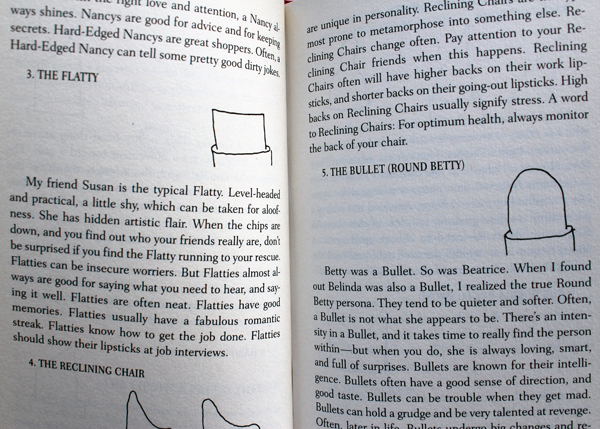
Chapter 4 was my favorite, as it provided a list of bite-sized anecdotes about lipstick as well as a lipstick-by-the-numbers section. I miss Allure's by-the-numbers feature tremendously and am dying to include something similar in exhibitions.
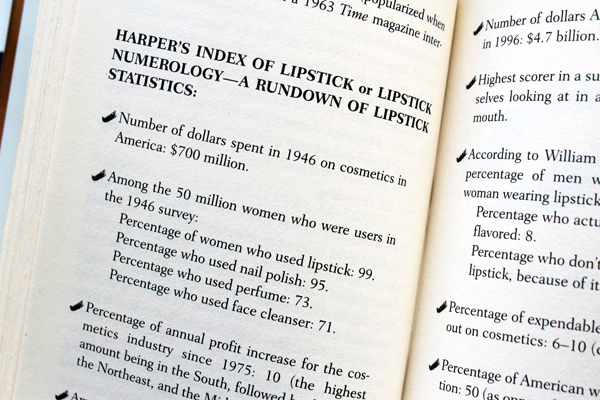
Chapter 5 gets into the nitty gritty of lipstick – the complete process of how it's produced and a lengthy list of ingredients, which is good information to have on hand. This chapter also includes sections on colors and names, both of which I believe warrant their own books. (There is actually an entire book on red lipstick, which I hope to review sometime this year.) You can definitely see how times have changed, since black and grey aren't mentioned at all and blue and green are discussed as having solely negative connotations of illness or death. These can be accurate, mind you, but as someone who has now fully embraced non-traditional lipstick colors (especially grey – I own no fewer than 9 shades), I found myself chuckling at the idea that blue or green lip colors used to be mostly associated with bad health. There are incredibly vibrant blue and green shades on the market these days – what could possibly be more a reminder of rebirth and growth than something like Menagerie's Juniper lipstick, for example, or capture the vitality of a hot summer day like MAC's Blue Bang? Anyway, while it was a nice read, it may have been good to include a section on different lipstick finishes and textures. But once again, this is really just part and parcel of this book being released in 1998, when liquid and glitter lipsticks weren't absolutely everywhere.
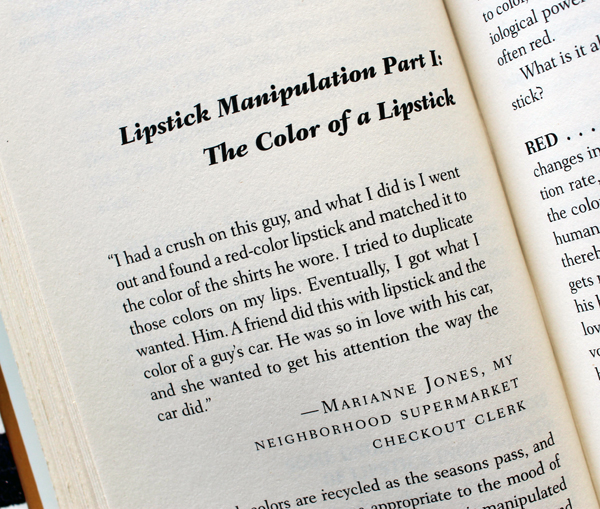
The naming section was notable for its inclusion of shade names from Renaissance England: apparently Beggar's Grey, Rat and Horseflesh were all listed as lipstick colors.
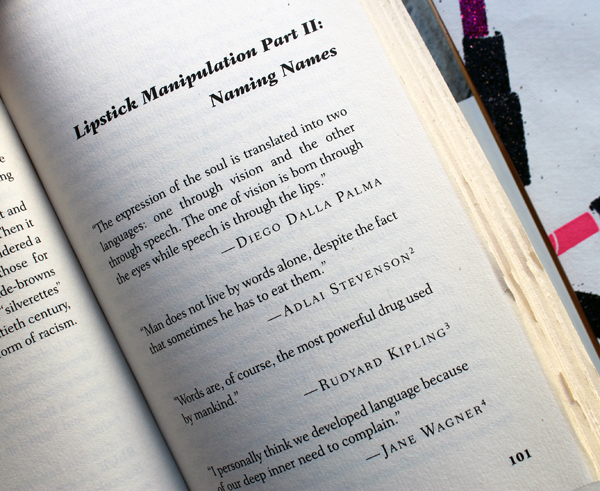
Chapter 6 gives some tips on how to navigate choosing and buying a lipstick in-store. With the advent of online shopping and swatches, this is largely obsolete and the advice itself was pretty basic. One unusual tip was to try swatching a lipstick on the inner wrist. I'm personally a fan of trying colors on fingertips since they are allegedly closer to your natural lip color, but if you want to find out how the color will look next to your overall facial skintone, the wrist is the place to swatch. Chapter 7 was more of the same, a list of lipstick application and color-coordination techniques that aren't anything you couldn't find online or in any beauty magazine.
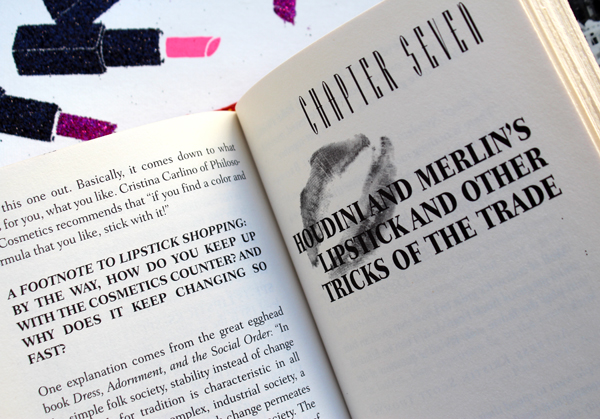
Chapter 8 is probably the only chapter that is not in need of a major update, as it provides recipes for making your own lipstick that are still totally doable today. Even as technology and customization options evolve, there will always be a subset of the population who like to DIY their lipstick for various reasons – ingredient preferences, cost, or just because they like experimenting. Chapter 9 continued with recipes, but they were really intended more as a joke to show what people did throughout history to make lipstick. "From the medieval glamour guides, here's a recipe for making lipstick at home: Go outside. Get a root. Dry it. Pulverize it. Add some sheep fat and whiteners to get desired color. If you are upper class, go for a bright pink. If lower class, use a cheaper earth red. If you are having trouble being pale, and have the money to pay for it, get yourself bled. If you're alive during the Crusades, wait for the Crusaders to come back, as they'll bring some glamorous and exotic dyes, ointments and spices, and you'll be able to experience the makeup golden age of the Middle Ages." LOL.
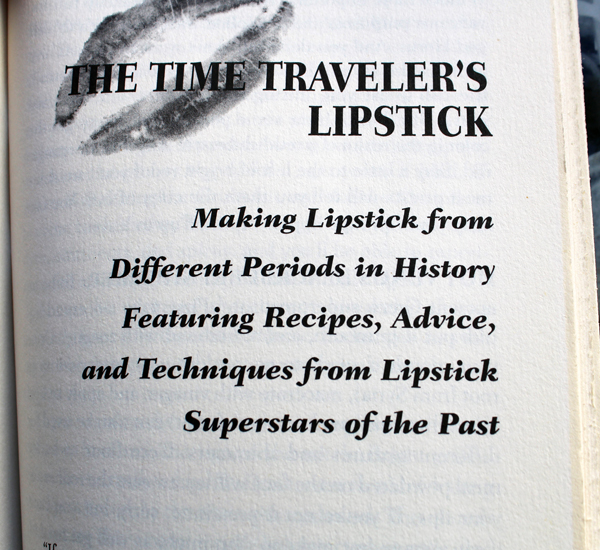
Chapter 10 was a mishmash of suggestions for alternative uses of lipstick and a list of famous art history and pop culture lipstick moments. Most of the suggestions were good ideas, but some, like no. 21, made me cringe. Yikes.
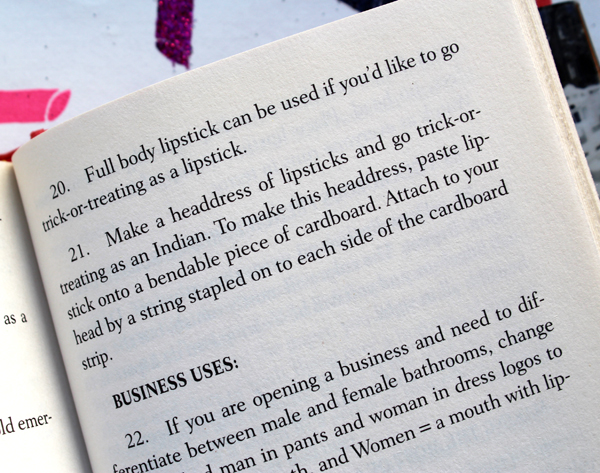
But I did love all the artist references, for they included two I plan on writing about for Makeup as Muse (Rachel Lachowitz and Sylvie Fleury) and Claes Oldenburg's Lipstick (Ascending) on Caterpillar Tracks which I covered back in October. The final chapter (if you can even call it that, as it's only a page and a half) sings the praises of lipstick yet again, and honestly, probably wasn't necessary.
Overall, Lipstick is a nice book for those in need of a primer on lipstick, but if you're in the mood for something more academic or a thorough feminist analysis of lipstick, this is not it. As noted previously, if you're looking to purchase a book on lipstick history I would go with either this or Read My Lips, but I don't think both are necessary for a beauty library (unless you're like me, who obsessively hoards makeup books in addition to makeup itself). Lipstick has sound sources, although by now they are a bit dated and I believe are mostly the same as Cohen's. I will say that the advantage of Cohen's book over Pallington's is the inclusion of photos, which were non-existent in Lipstick. So it just depends on whether you want a glossier tome with more eye candy or one with less visual frills and more anecdotes, as the information in both is basically identical.
Have you read this one? I'm really hoping someone will write an updated cultural history of lipstick, as after reading this I think one is sorely needed.
*Another reason I chose to review this book first instead of the others I have planned is that I was recently interviewed by a journalist who is writing a brand spankin' new cultural history of lipstick, so hopefully in the next year or so we will have an updated version (and hopefully I will be quoted!) Stay tuned. 😉
I’m a little late in celebrating a very small Instagram milestone with a giveaway, but I figured it was a good excuse to deaccession some items I accidentally ended up with multiples of. I know some of my blog readers aren’t on Instagram and most of my IG followers don’t keep up with the blog so giveaways are a nice opportunity for everyone scattered across various social media platforms to have a chance at winning some really fun stuff.
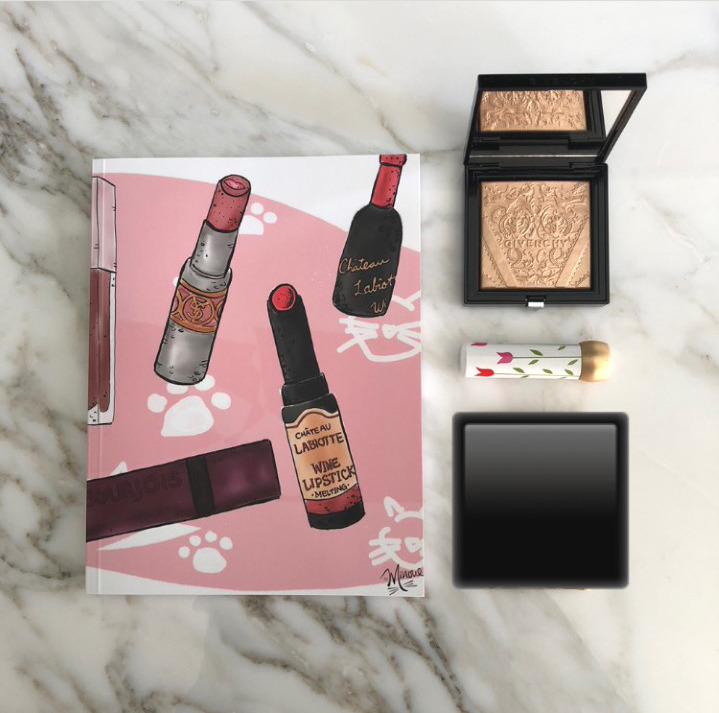
To celebrate 3,000 followers on Instagram, I’m giving away three lovely objects: a beautifully embossed Givenchy highlighter (you can read about the pattern here), an adorable notebook with artwork by talented beauty writer and illustrator By Minoue, and a Helena Rubinstein tulip-printed lipstick from the mid-1960s. Yup – for the first time in the Museum’s history I will be giving away a vintage item! (Obviously I don’t recommend that you actually use it.) Helena Rubinstein’s Tulip line was sold between 1963-1967 and featured lipsticks and a pressed powder compact. Judging from the number of ads I’ve come across, it was a very popular collection or at least marketed heavily.
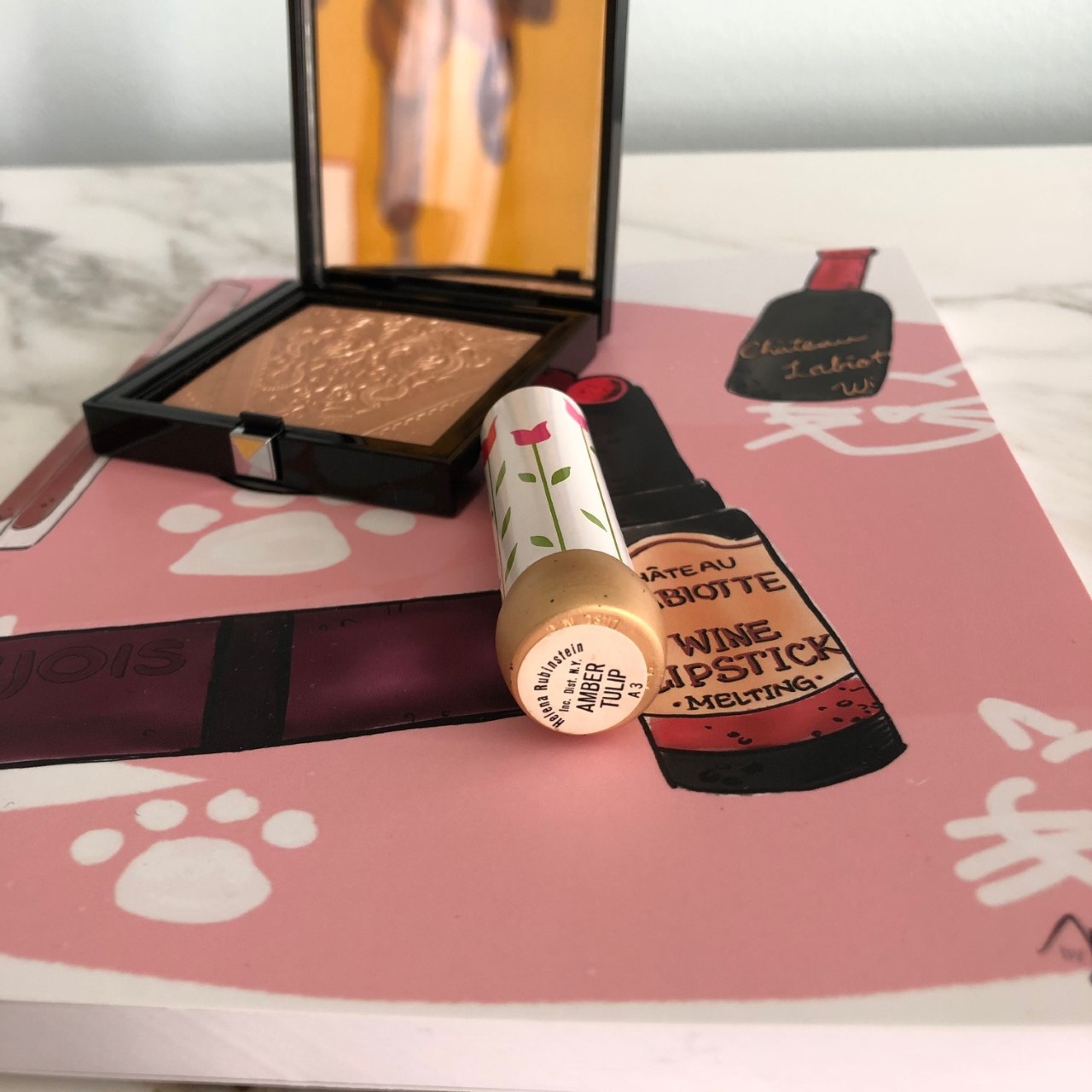
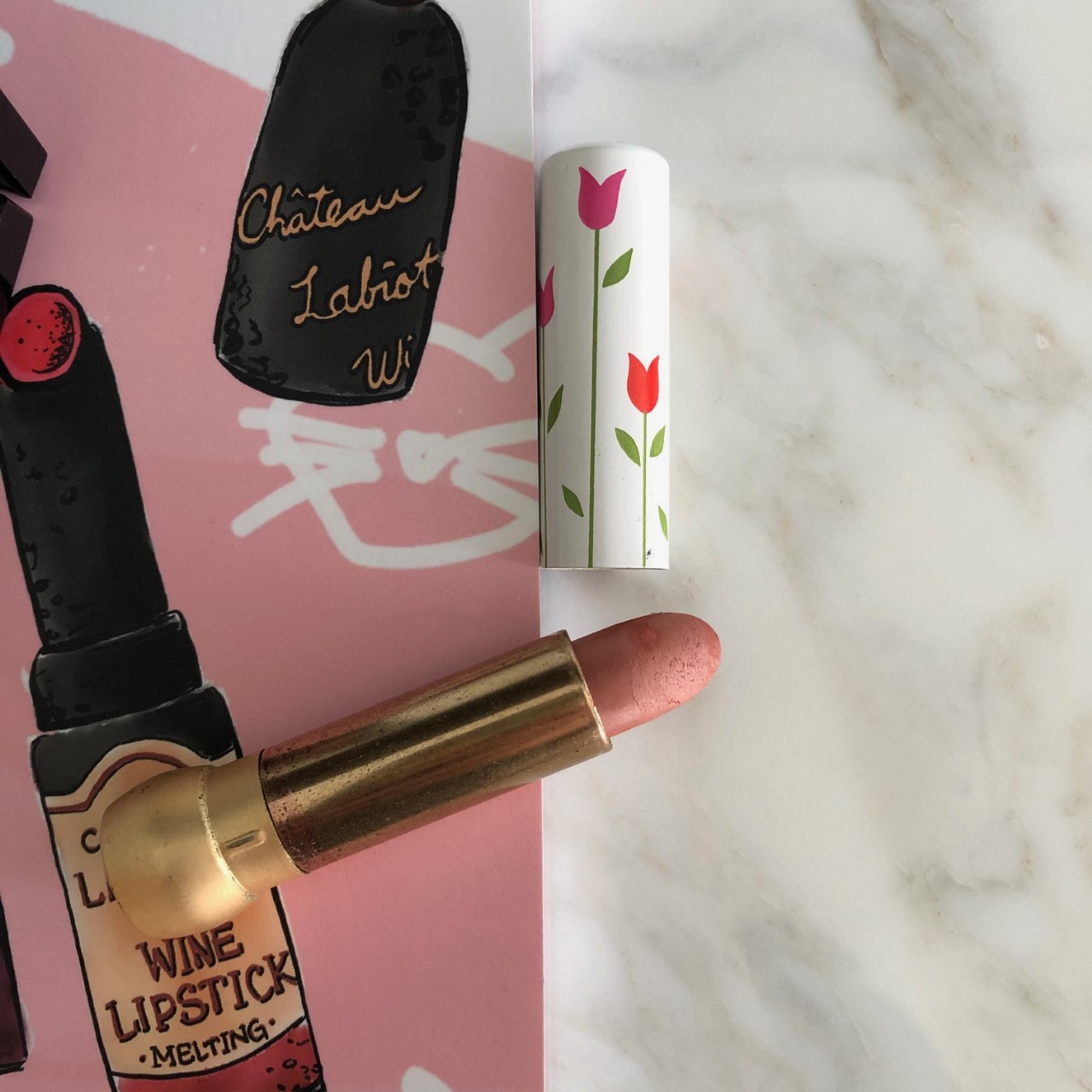
There will also be a bonus mystery item included in the giveaway, which I’ve covered up so the winner can be (hopefully) pleasantly surprised. Hint: it’s another tiny vintage item that will go well with the lipstick. 😉 AND the winner will also get their choice of samples, as many as their heart desires!
There are lots of ways to enter via the Rafflecopter widget below. Please note that for all of the Instagram entry options, you must be following me there for them to count. Yes, it’s open internationally!
a Rafflecopter giveaway
The winner will be announced here on Saturday, February 29. Good luck and thank you for entering!
Normally I'd wait a whole year and do a Ghosts of Christmas Makeup Past post to be more seasonally appropriate, but I simply couldn't in the case of the amazing (mer-mazing?) Mikimoto holiday collection. As with the 2018 collection, the historic Japanese pearl and jewelry purveyor teamed up with an artist to create some incredibly whimsical underwater-themed packaging. Belgian artist and illustrator Brecht Evens had the honor of being Mikimoto's second artist collaboration. I must admit I think I like his concept even more than the one by Emmanuel Pierre in 2018. If imagery of celebratory mermaids and assorted mer-critters having the ultimate holiday party doesn't do anything for you, I question your humanity.
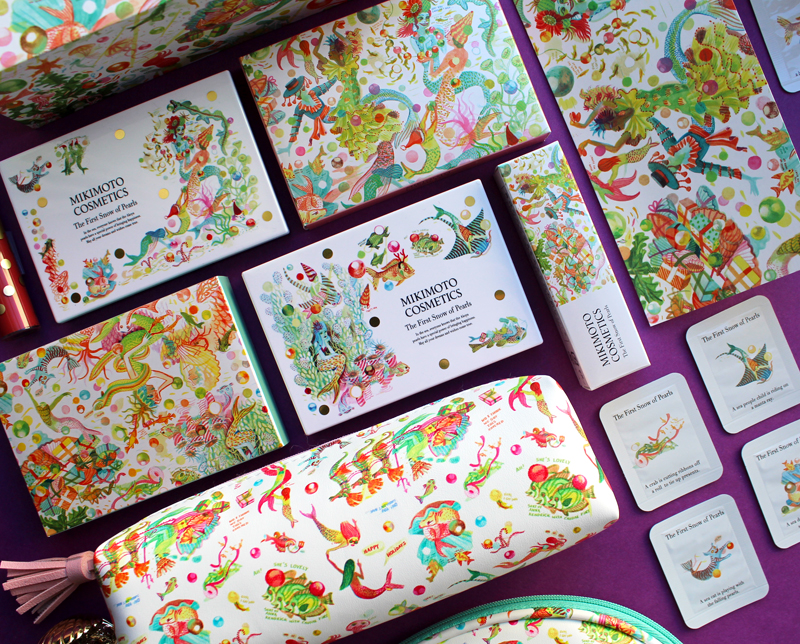
We'll start with the palettes. The details on everything are staggeringly clever. And while the mishmash of characters and objects may initially seem haphazard, Evens' messiness is actually entirely intentional. "When I draw the jumble of the city or I draw nature…errors, spots and little incongruities make it more realistic. Because when you're in a space and you start to look around, you don't take in the whole. You can't. You don't see the world around you like you see a postcard; it's not organized that way. We're moving, others are moving, and the eye makes constant choices, it decides what to interpret and what to identify. So at any given moment, there's a lot of mess in there and, for me, this kind of mess has to stay in. It's controlled; it's never like I'm creating randomness. It's just that incongruities seem to catch the eye better. They're more natural and they latch onto the eye more realistically. Maybe I do play with a lot of stuff. But I only do it when it serves my narrative. It's all part of calibrating things. When I use a lot of detail, it's very calculated – I'm making sure it doesn't obstruct anything essential." The dozens of scenes may still be overwhelming for some, but I personally enjoyed picking apart all the individual vignettes and then seeing how they came together as a whole.
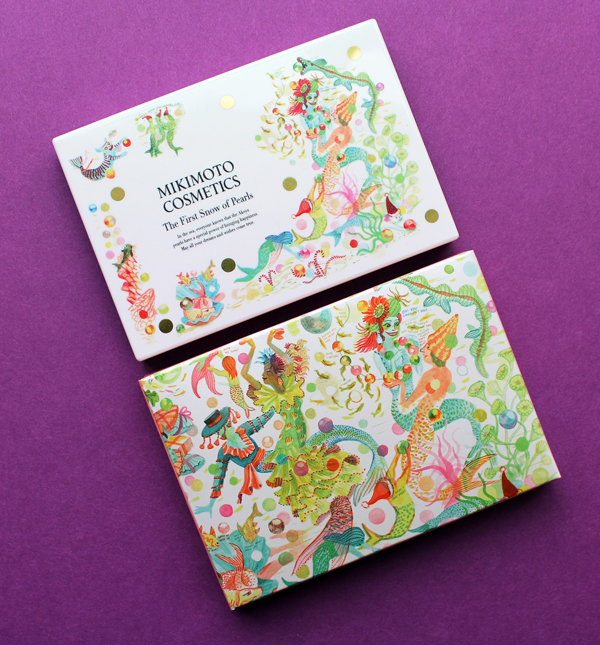
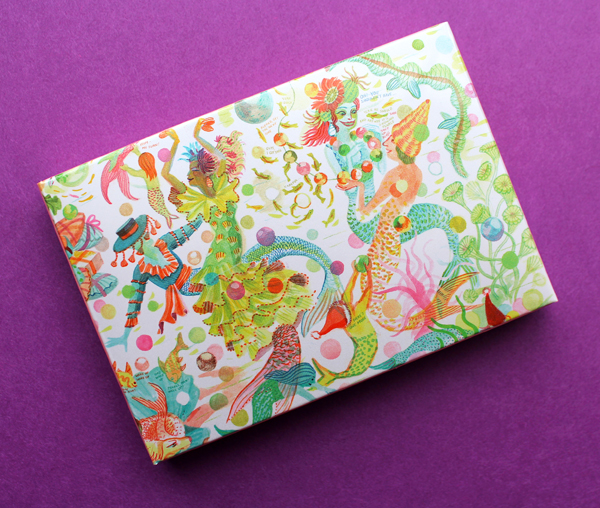
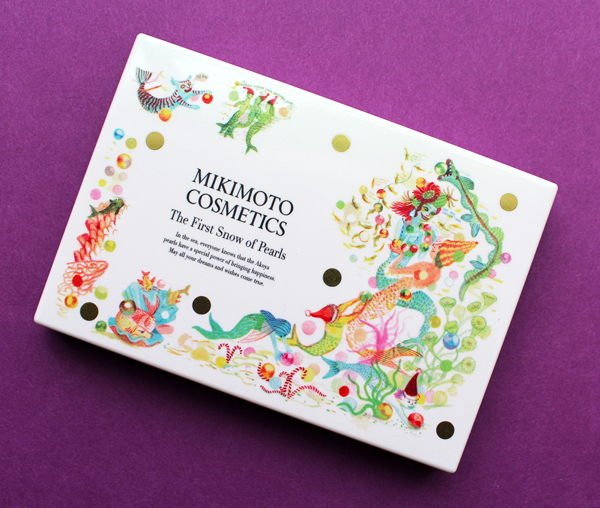
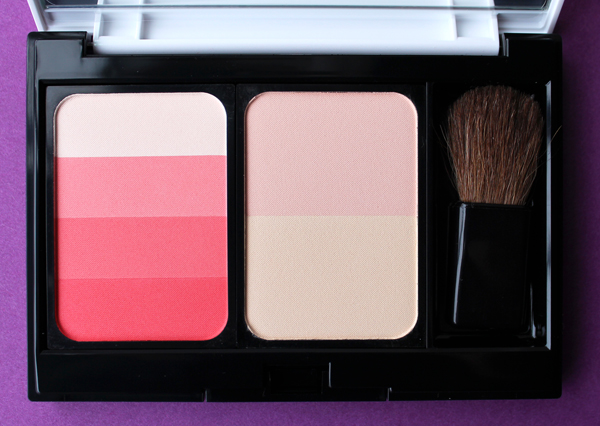
This is a particularly amusing exchange between two mer-folk and a nosy little fish. The addition of text is representative of Evens' background in illustrated books and comics. The humor reminds me a little bit of Danny Sangra, the artist who designed Burberry's spring 2018 palette.
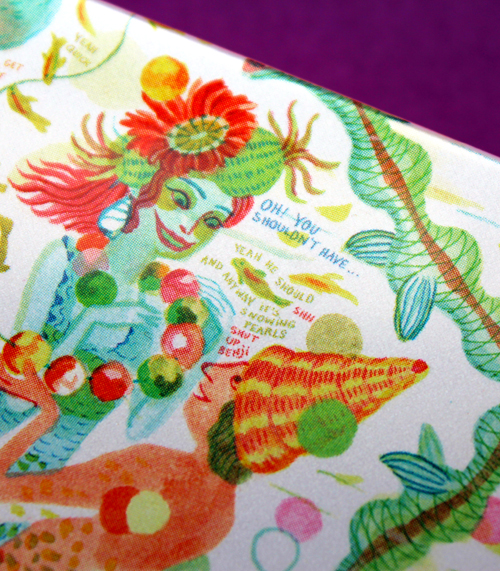
I'm obsessed with this mer-kitty.
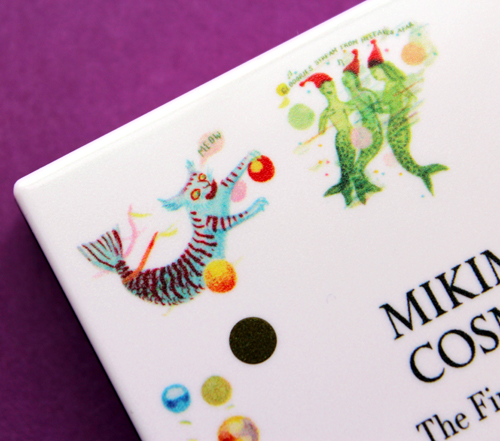
The scenes for the eyeshadow palette are equally spectacular. Sting rays take mer-children for a ride, while a sea elf peeks out from some seaweed to admire a blue-haired mermaid.
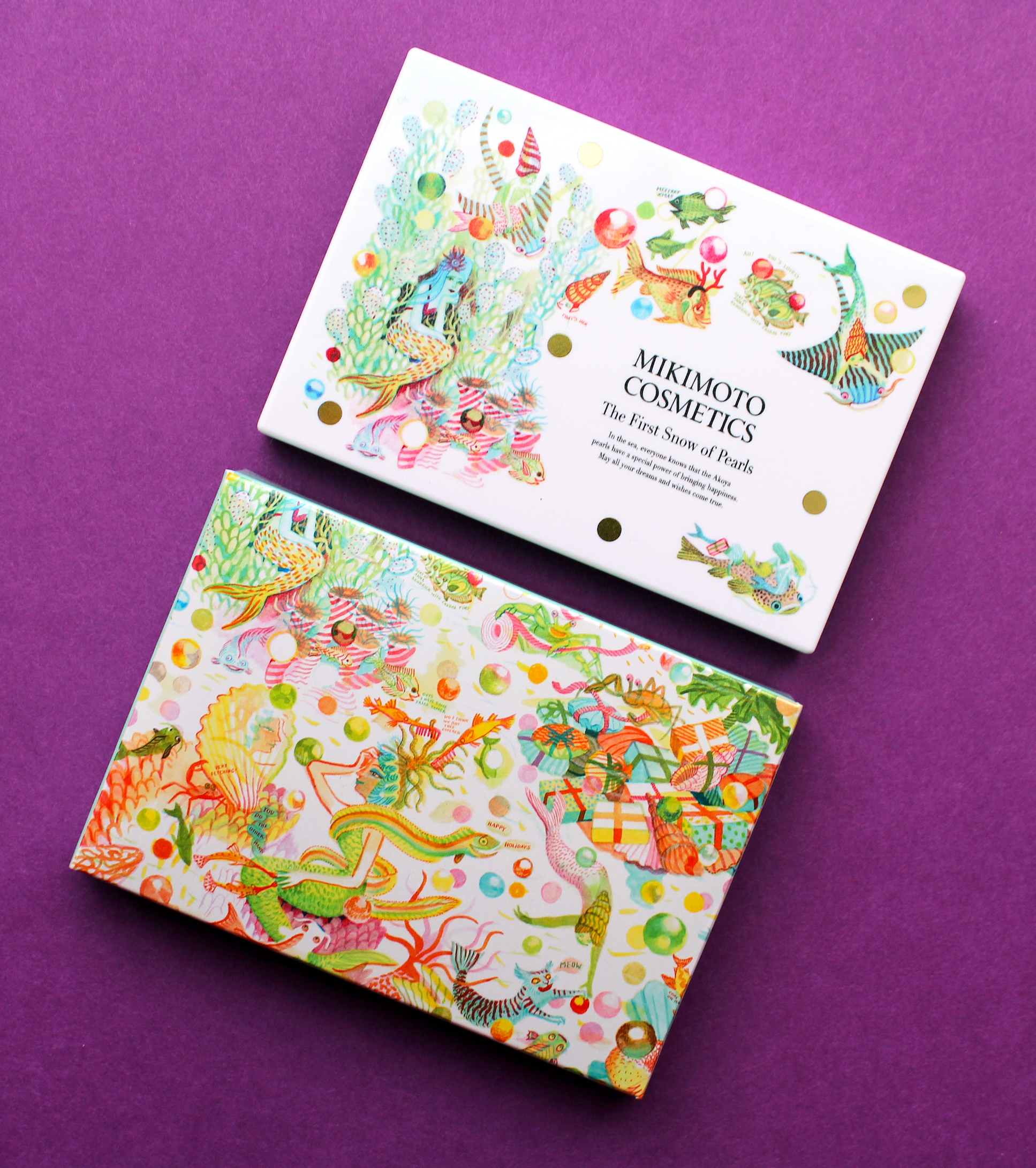
On the outer box a school of fish help another mermaid primp for a holiday party. She checks out her reflection in a seashell mirror held by two crabs.
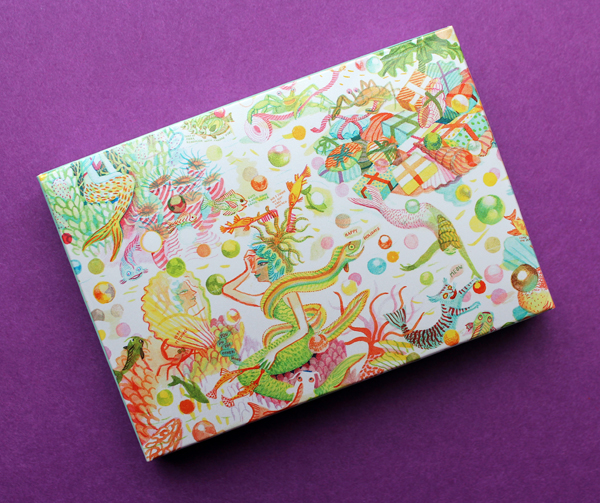
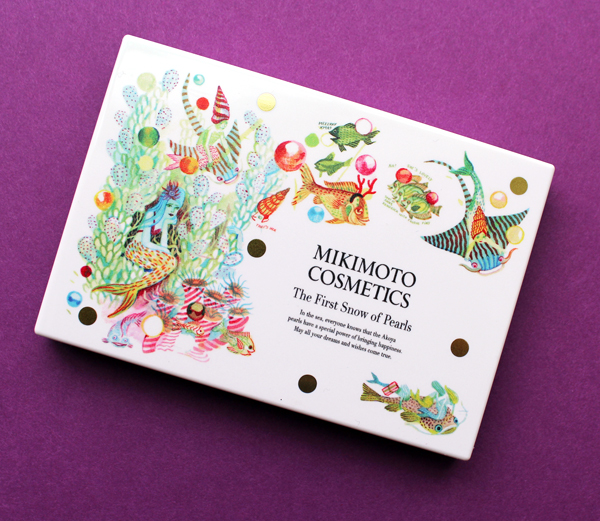
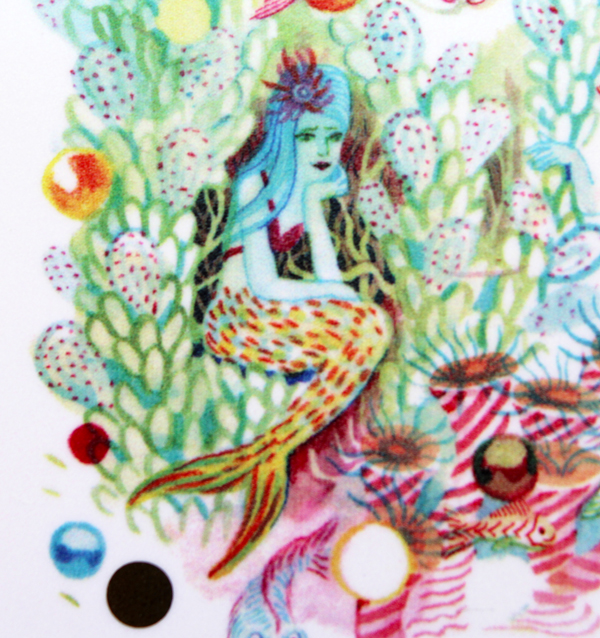
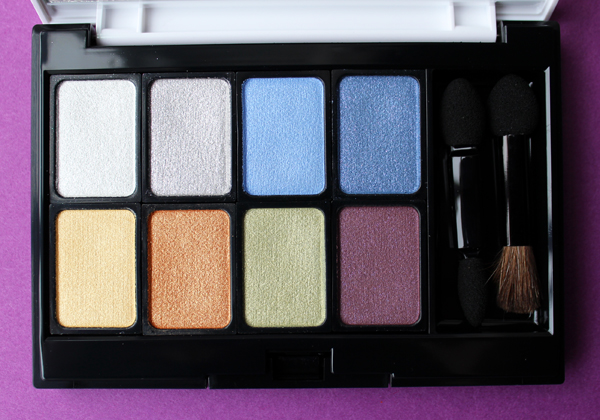
I think the imagery on the sides of the skincare set was my favorite.
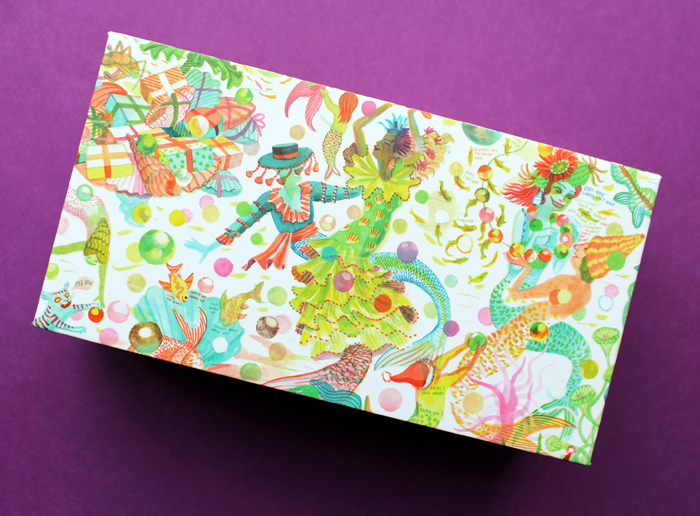
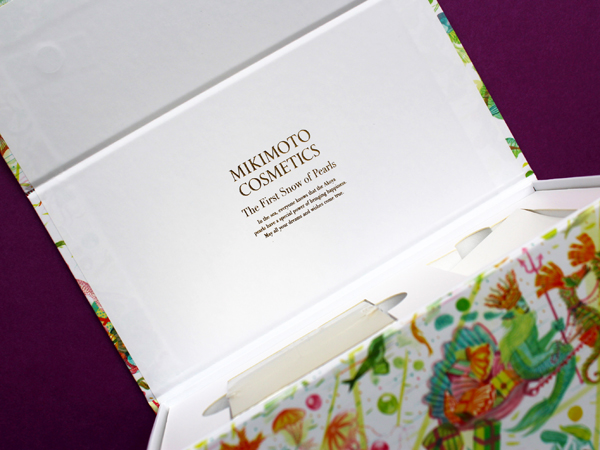
The set includes what appears to be a very fancy moisturizer (I didn't want to open the sealed plastic) and what I believe are packets of face serum. Each one tells a snippet of the "First Snow of Pearls" tale. Unfortunately I couldn't seem to locate the story at the Mikimoto website as I did last year, so I'm not really sure what it's supposed to be about.
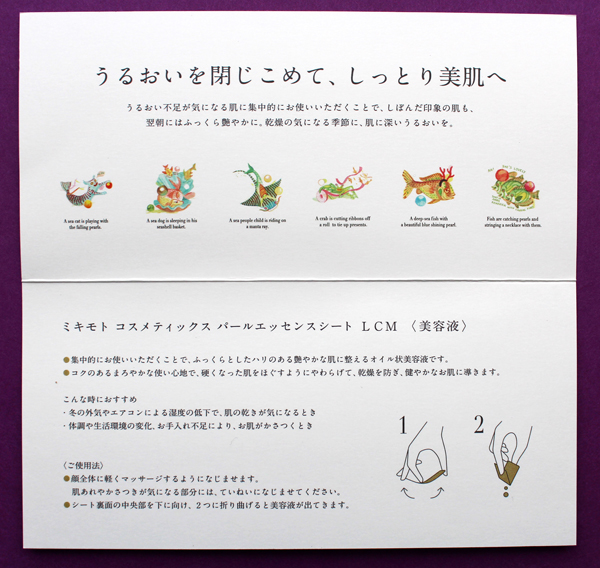
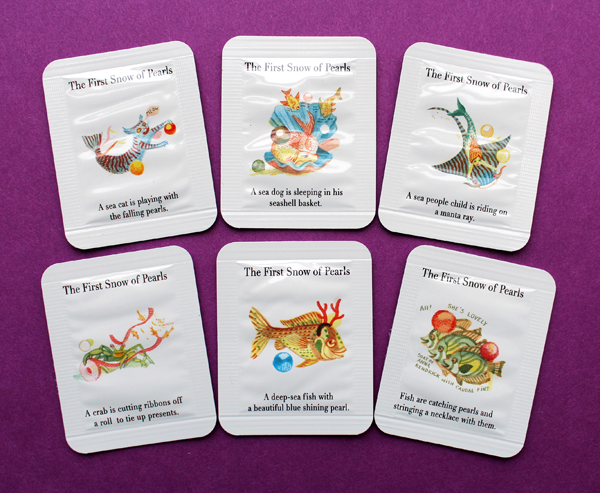
I love that the images are totally bizarre but also make perfect sense. The concept of a sea-dwelling Santa is absurd, but if one exists, of course his sleigh team would be seahorses instead of reindeer and his bag of presents shaped like a seashell. Ditto for the mermaid taking a ride on the jellyfish "bus", pulling on its tentacles to signal her stop. While the underwater realm Evens created for Mikimoto is entirely imaginary, the usual rules still apply. As he puts it: "I do think I use visuals that might be dreamlike, or psychedelic, but I don’t think I use dream logic…you have to believe in the world you're creating."
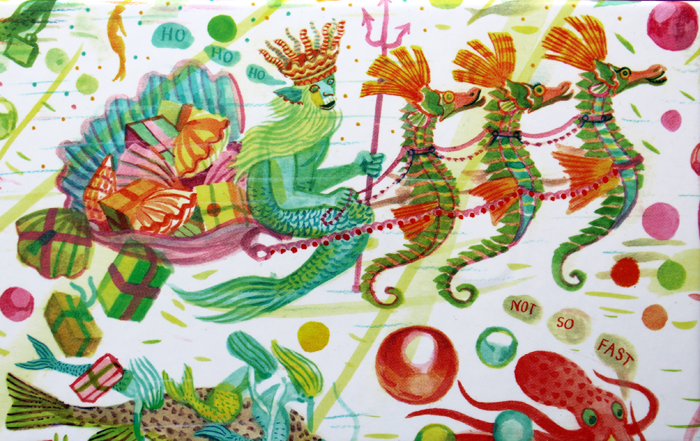
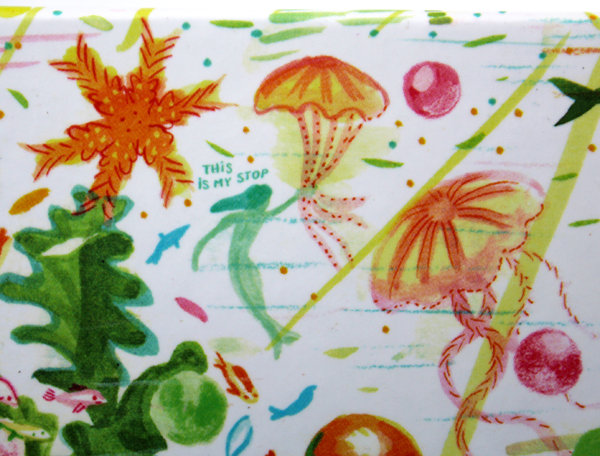
There was also a lip gloss, the box for which shared the same illustrations as the skincare set.
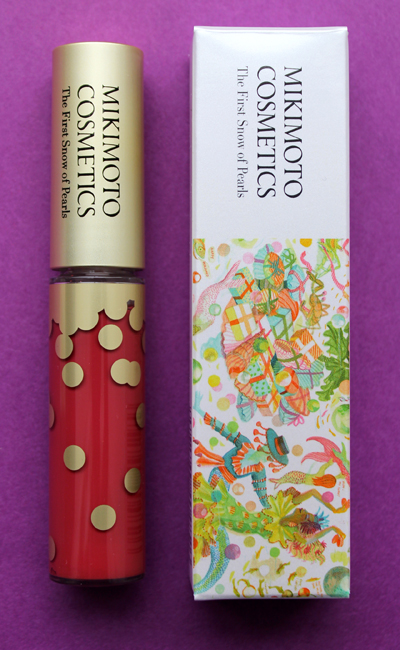
Some lovely extras were included as gifts, like this silver toned box topped with a manta ray, a gold seashell cardholder and two cosmetic pouches. I noticed the powder brush was a bit scratchy, but 1. it was free and 2. I don't intend on using it anyway.
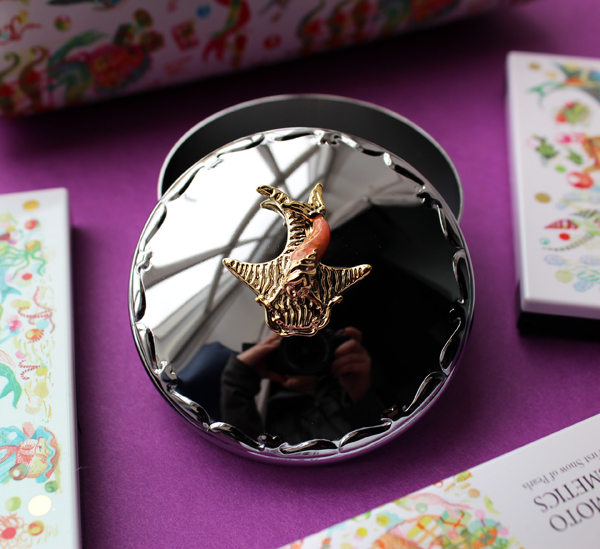
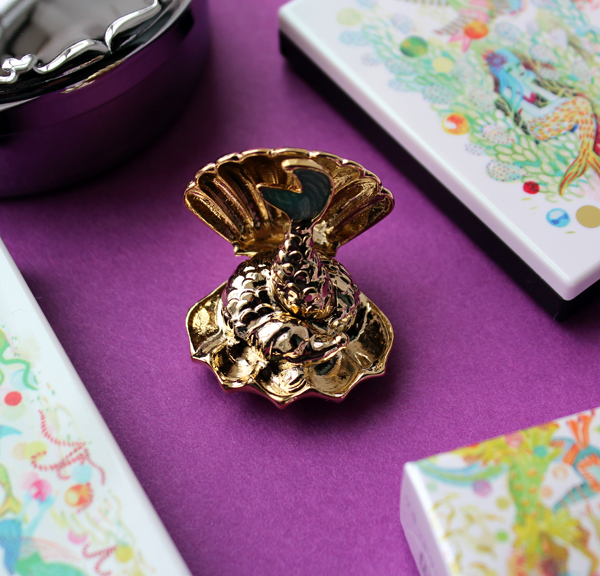
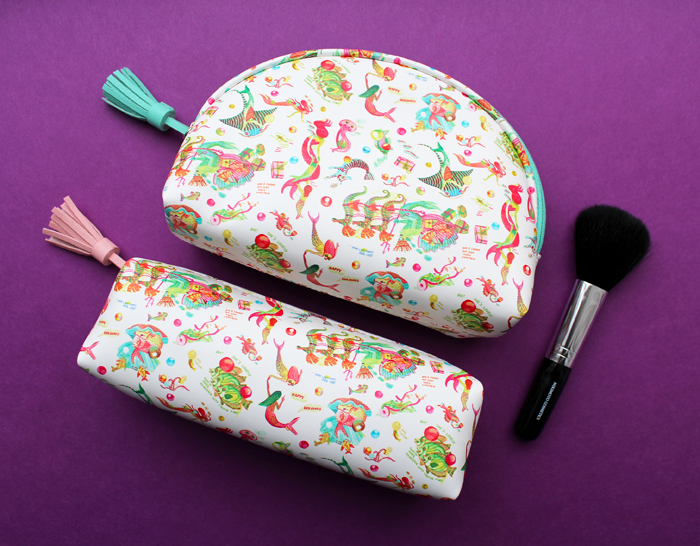
Let's learn a little more about the artist behind these fantastical scenes. The Belgian-born, Paris-based Brecht Evens (b.1986) studied illustration at Sint-Lucas Gent in Ghent, Belgium. Building on his country's tradition and notoriety for comics, he focuses on these and illustrated books, but has also completed murals in Brussels and Antwerp, created fabrics for Cotélac, and collaborated with Louis Vuitton on a Tokyo travel book.
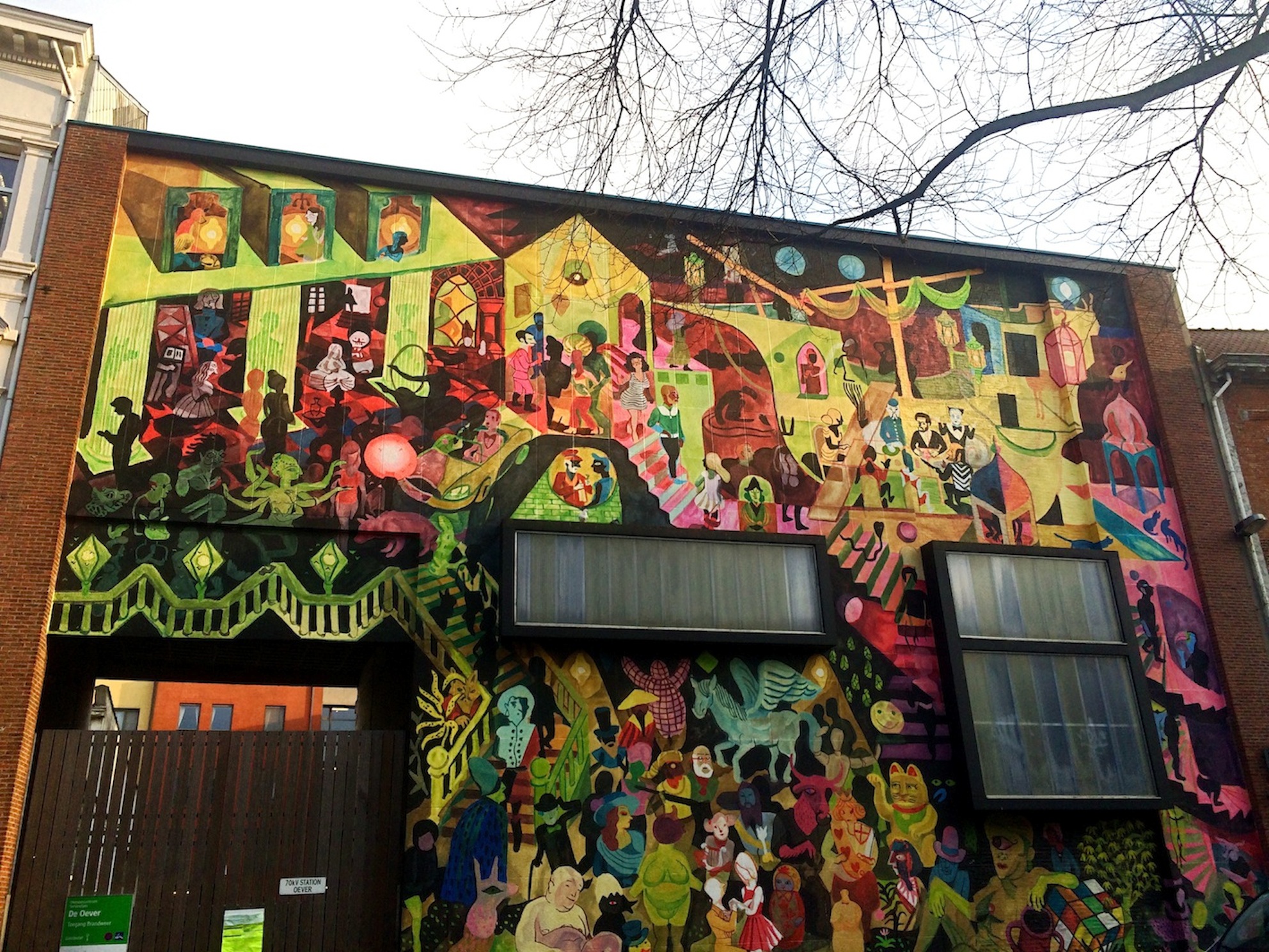 (image from theculturetrip.com)
(image from theculturetrip.com)
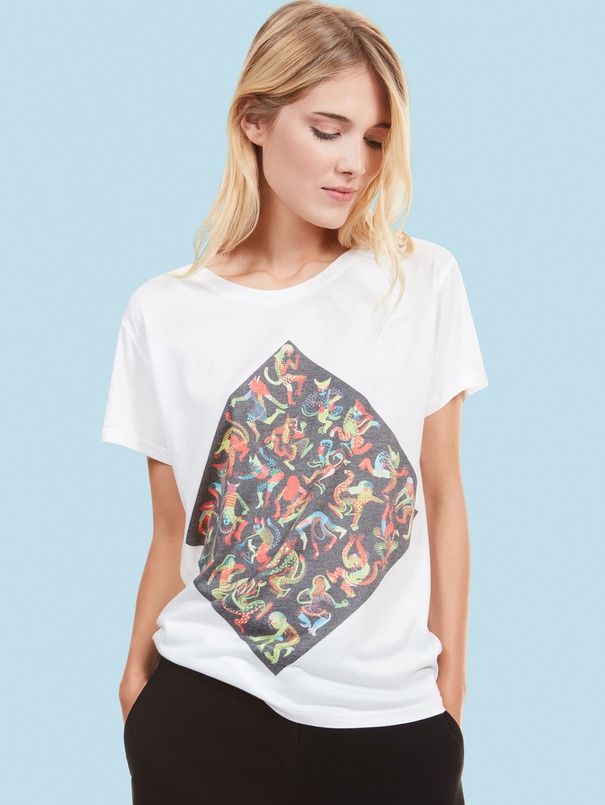
(image from cotelac.fr)
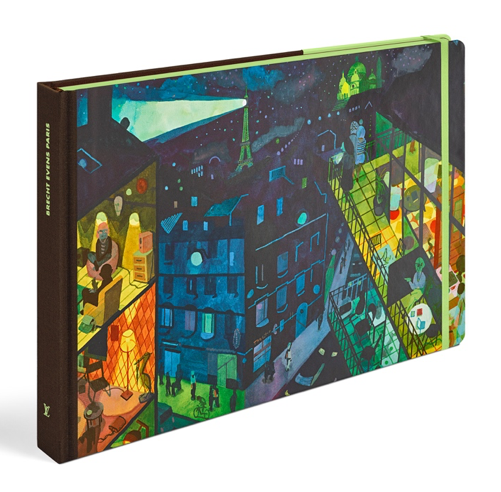 (image from brechtevens.com)
(image from brechtevens.com)
Stylistically, Evens is influenced by his mentors, illustrator Goele Dewanckel and cartoonist Randall Casaer. You can also see glimpses of Pieter Bruegel the Elder, M.C. Escher and Picasso. Take, for example, the resemblance between the artwork Evens created for French publisher Actes Sud and Bruegel's Battle Between Carnival and Lent. Both utilize a bird's eye perspective and include dozens of different vignettes.
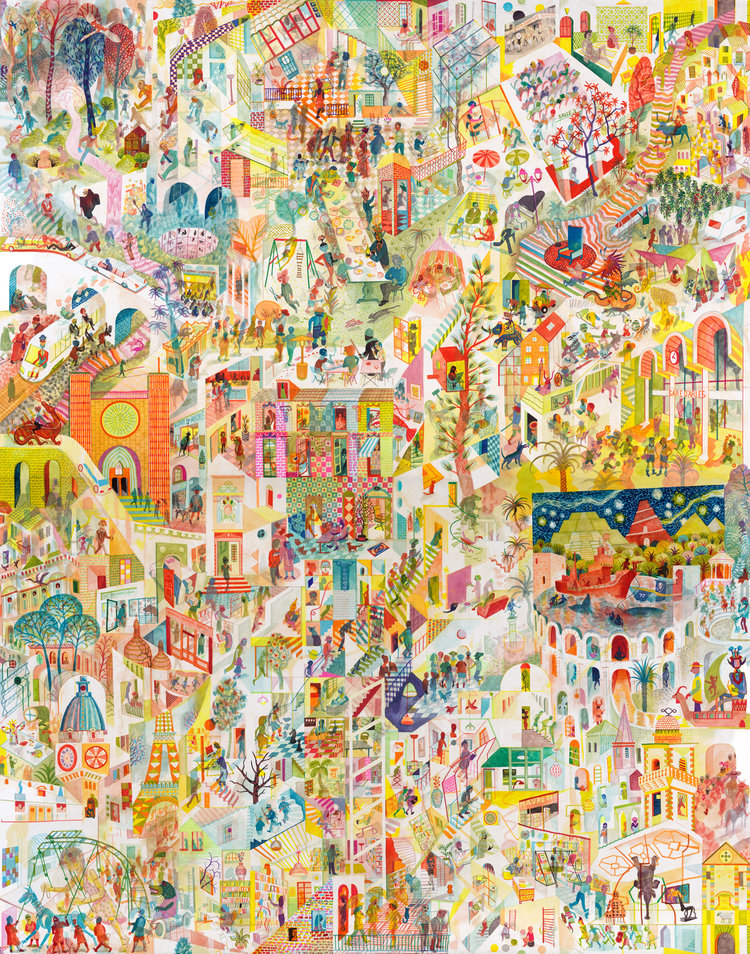 (image from brechtevens.com)
(image from brechtevens.com)
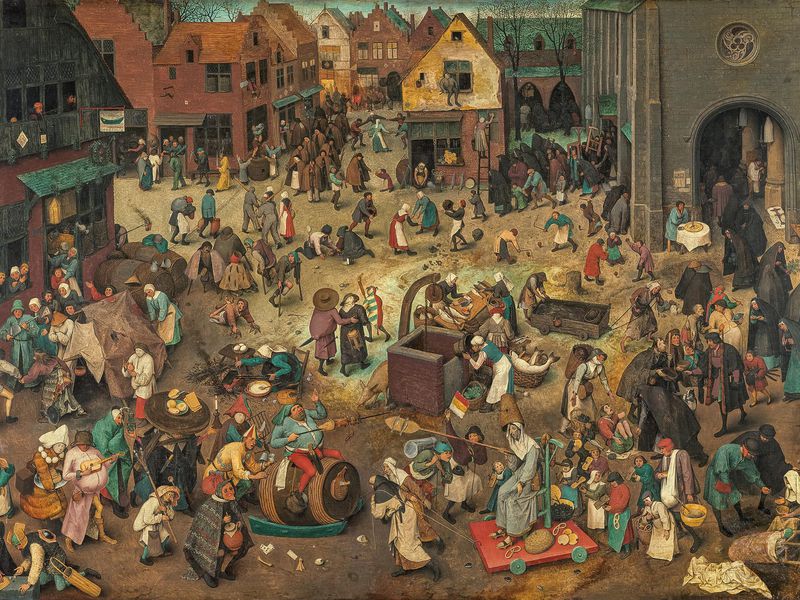 (image from smithsonianmag.com)
(image from smithsonianmag.com)
While Evens published several award-winning books early in his career, he is best known for more recent works Panther (2014) and The City of Belgium (Dutch and French versions released 2018; forthcoming editions in English in 2020). In terms of content, most of Evens' narratives tend to be a little dark. Panther is about a young girl named Christine whose cat dies. Her mother also threatens suicide, drives away and never comes back. Panther arrives seemingly to be Christine's friend and help her cope, but ends up being far more malicious than he appears. One reader called it a "apologism of pedophilia, zoophilia and incest". Yikes.
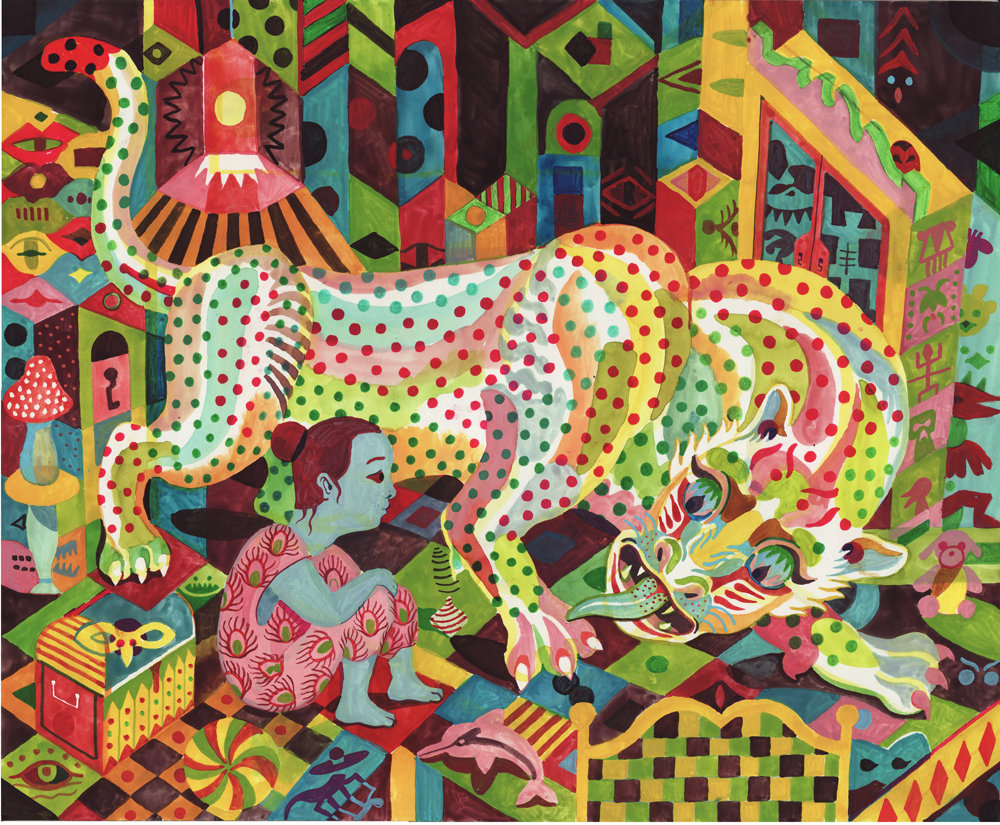
The City of Belgium (titled Les Rigoles for its French audience and Het Amusement for Belgium) is actually part of the same universe as Evens's 2009 work The Wrong Place, and the various versions of the book are meant to be connected. "I wanted something like a paperback copy of Balzac, a whole world that would be portable. But, instead of just one city, I wanted to make it a kind of European amalgam…the fun result would be for everyone to think it's their city."
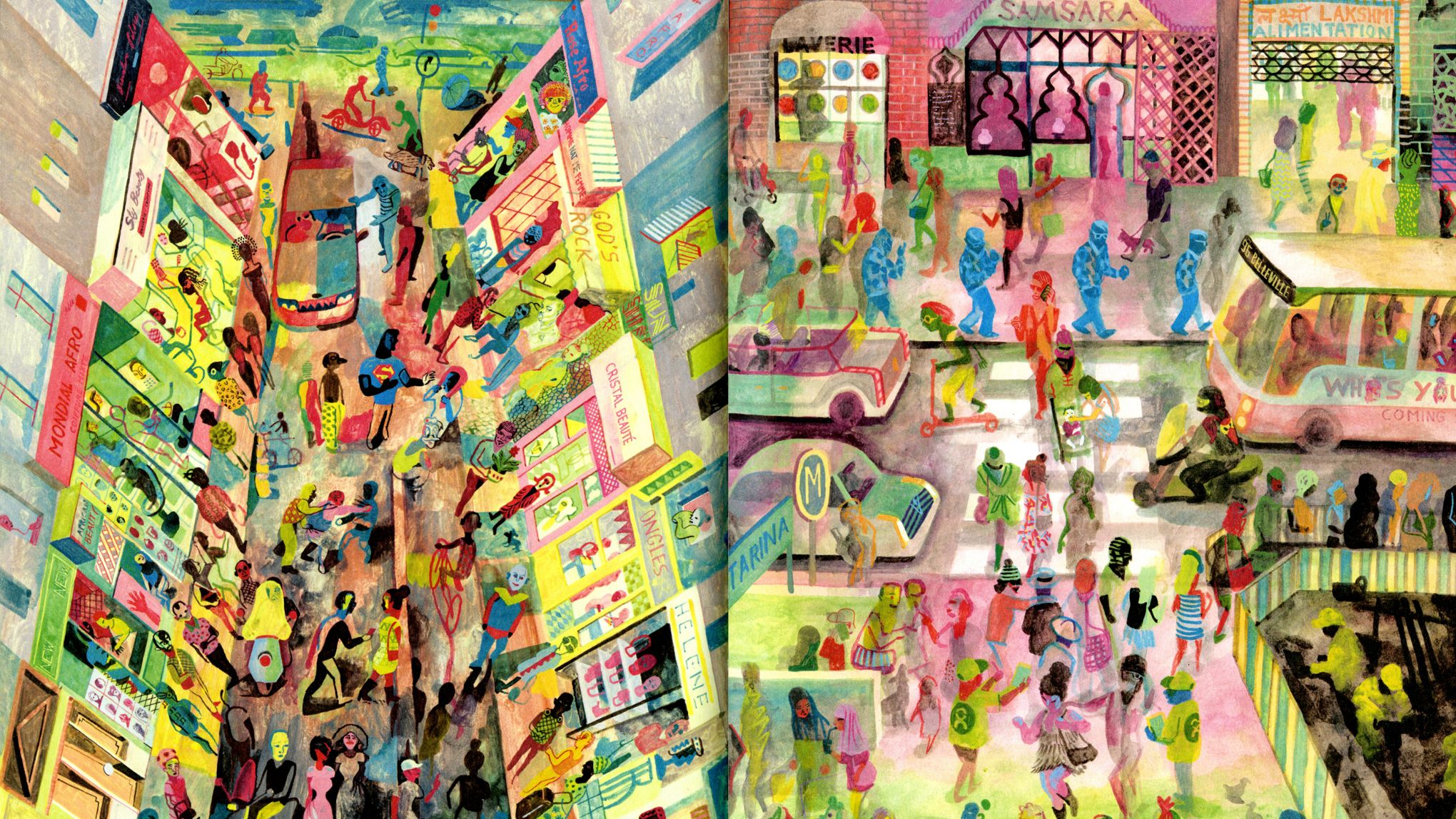 (image from lefigaro.fr)
(image from lefigaro.fr)
The City of Belgium also reflects Evens' struggle with bi-polar disorder and gradual recovery from a particularly bad episode. While not as unsettling as Panther, the book follows three characters having parallel urban adventures throughout a single evening, one of whom suffers from depression. Evens discusses how the book came to be and acknowledges the "heavy" themes alongside the humor. "The germ was just me coming back to life. A state of depression never carries any potential or interest. Then, once the interest starts returning – bit by bit – it's like you're back at zero. At that point, it's just lines in old sketchbooks, dreams you have, something you happen to see sitting on a terrace. Because it's so surprising to have ideas again, you notice every little thought and you get them down in a sketchbook…[in 2013 and 2014] things were so messed up; I couldn't ever have considered such a massive project. The book is a product of peace having descended…the themes may be heavy, but I hope the treatment is light. Don't forget to mention it's full of gags and jokes!"
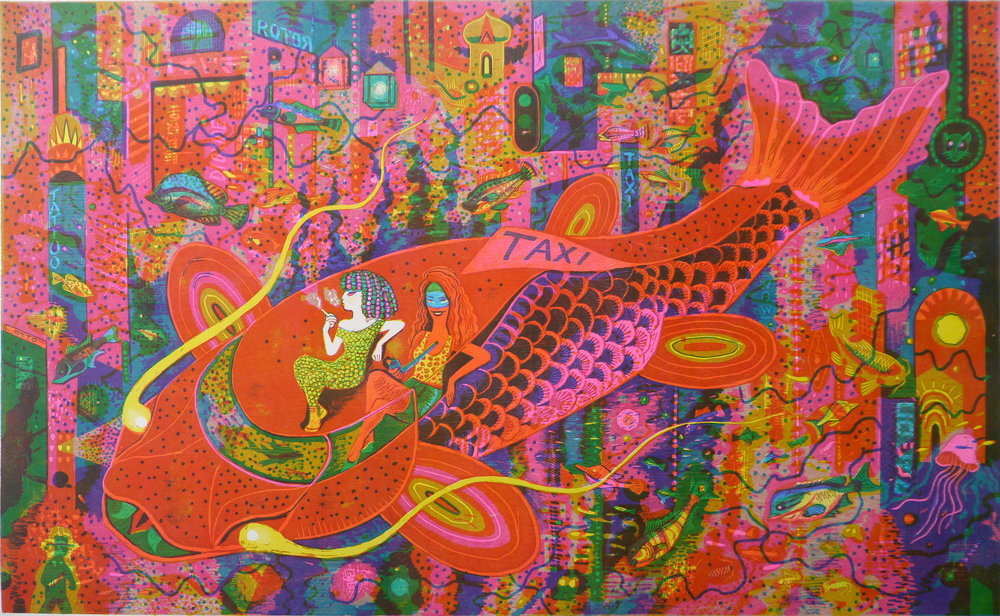 (image from brechtevens.com)
(image from brechtevens.com)
Evens appropriately chose a more lighthearted story for the Mikimoto collection while maintaining the concept of connected times and spaces. The characters and scenes appear disparate at first, but as you look more closely you can see that they're all part of the same underwater universe – preparing for the holiday season and the First Snow of Pearls. If anyone is going to create a fanciful mermaid-laden paracosm or "expanded reality" as one reviewer put it, Evens is the perfect choice, as he had been making these sorts of "imaginary worlds" since he was a child. "Practically all I did was try to make imaginary worlds come to life, which meant: visible to other people, in comics, designs for buildings, fantasy world maps, board and card games, cassette tapes… No teaching, no explaining, no argument, just a portable world, bound together, with maybe a dust jacket around it or even some leather," he says. He also did a fantastic job incorporating the pearls, which appear throughout all the scenes. My favorites are the fish helping construct a pearl garland and telling the lazy sea dog to wake up because it's snowing pearls.
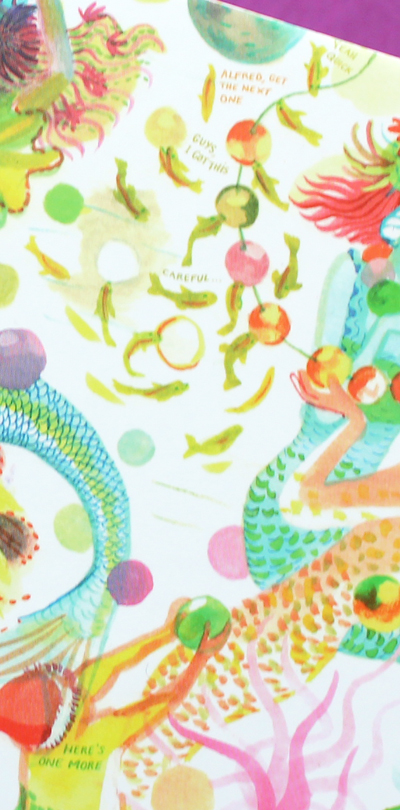
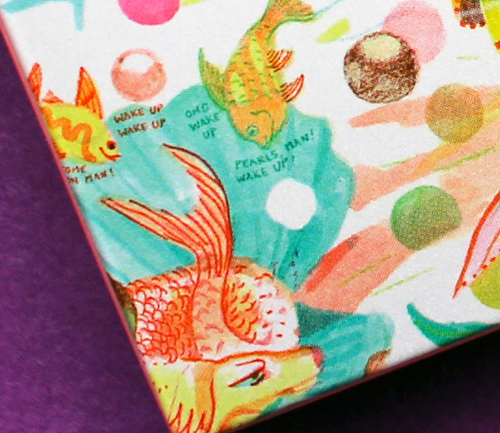
The illustrations were incredibly fun on their own, but the addition of Evens' signature text provided another layer of humor.
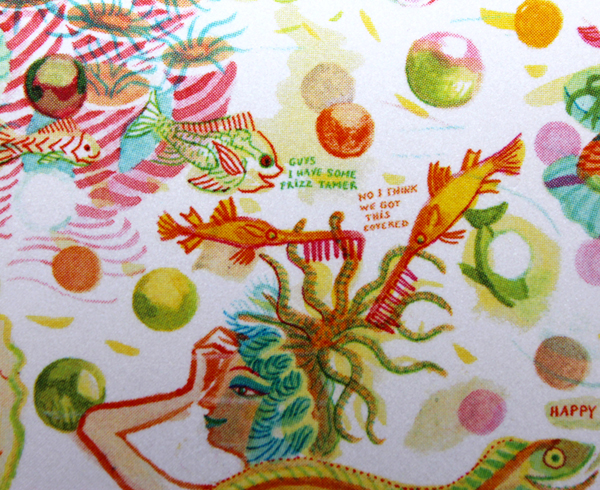
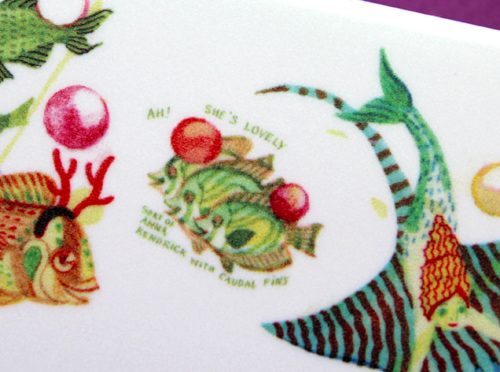
"A lot of people, when they write dialogue, just go 'A, B', 'A, B', 'A, B.' They'll have the characters neatly wait their turn. Whereas I don't think our brains really work that way. In reality, it's more of a constant traffic jam – even when we like each other and we're interacting well. When we're interacting less well, it's more extreme," he says. You can see the more realistic dialogue (at least, as "realistic" as this mermaid world can be) Evens was aiming for in this scene depicting crabs and fish wrapping holiday presents.
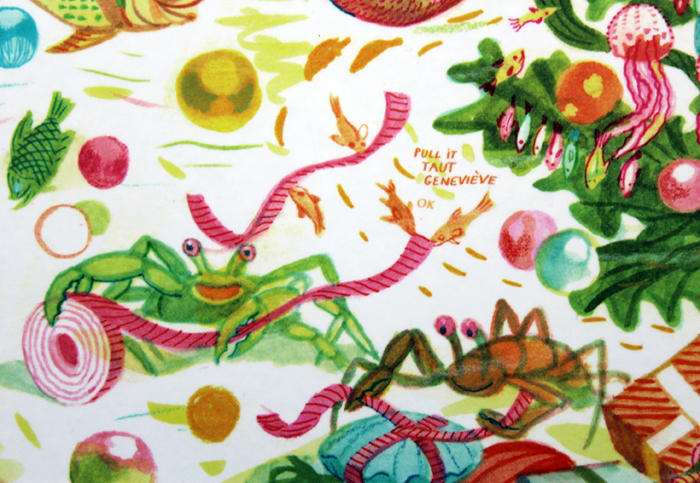
I have no information on how the Mikimoto collaboration came about. I summoned my courage and emailed Evens to see if he could shed any light. He politely declined to be interviewed, but I'm guessing that Mikimoto approached him as he indicated he does not know much about cosmetics. I believe these are new illustrations Evens created especially for the brand, but I find it odd he hasn't included the collab on his website or IG page. I'm also assuming they were done using his usual handmade techniques. For The City of Belgium, he explains: "All the drawings were done on paper and I write by hand. So the creative parts are all computer-less. Where the computer comes in is for research; when I want things to be 'right' or inspired by actual stuff, then I'll look something up… Ecoline [ink] dominates, but I use a mix. Now I have some different inks and, with the same brush, I'll also pick up gouache to make it what I want. Or, I'll mix it with real aquarelle. It all depends on what I'm searching for, what opacity or transparency I need to have. There will also be some pastels and, often, markers." In looking closely at the lines and the way the colors overlap, it appears Evens did indeed draw everything by hand using a mix of markers and pastels on white paper.
So that about wraps it up. What do you think about this collection? What's your favorite scene or character? I'd party any time with these mer-folks!
I love when I get an inquiry to which I can actually give a solid response. A gentleman sent in this picture he had of an old lipstick and asked if I could identify it and provide any sense of its monetary value.
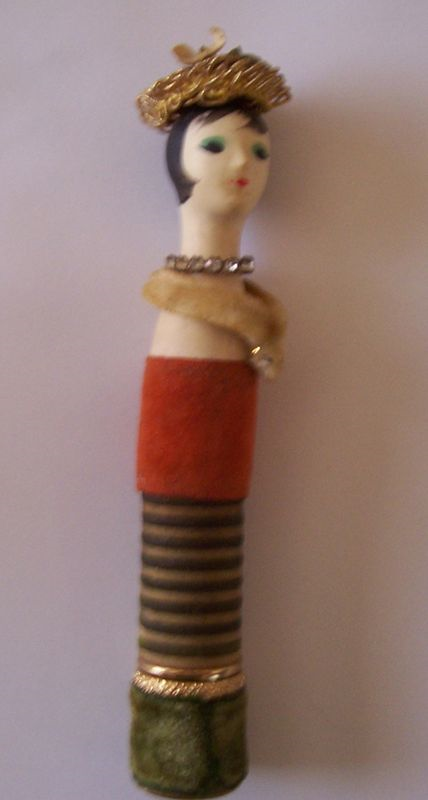
I recognized it immediately as one of the Revlon Couturines doll lipsticks released between 1961 and 1963. But which one? The only one I recognize off the top of my head is Liz Taylor as Cleopatra, since it's pretty obvious.
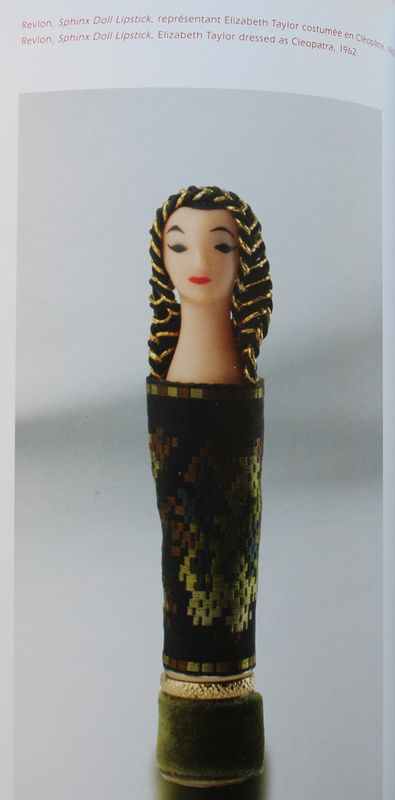
Fortunately the Revlon Couturines appear in Lips of Luxury (which I highly recommend for any beauty aficionado – check out my review here and in-person pics here.) According to the photos in the book it's not Marilyn Monroe.
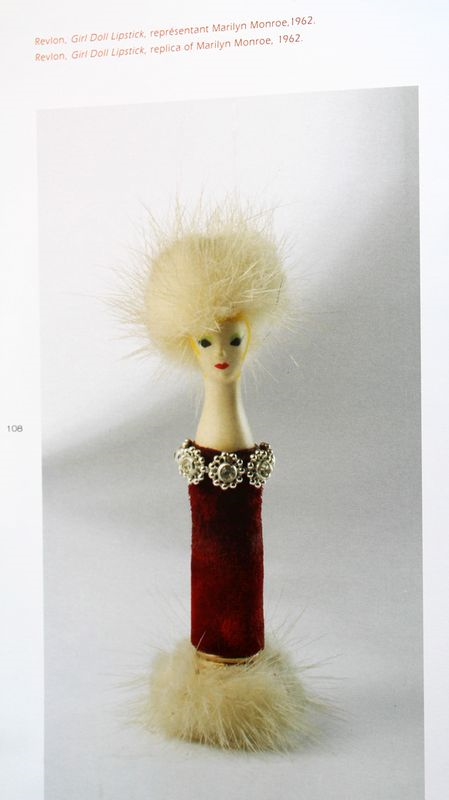
Or Ava Gardner.
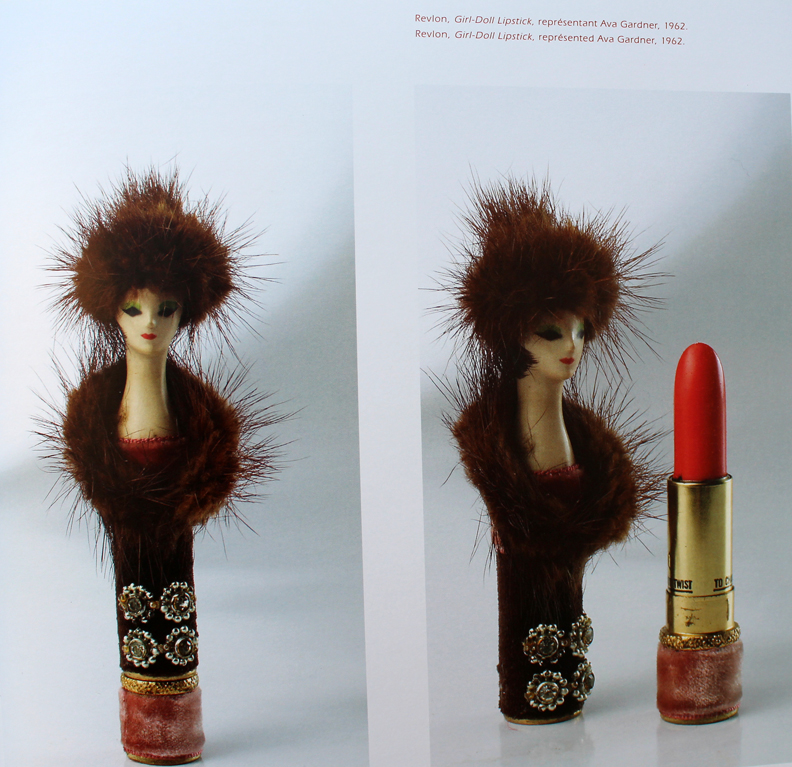
So it must be one of these ladies.
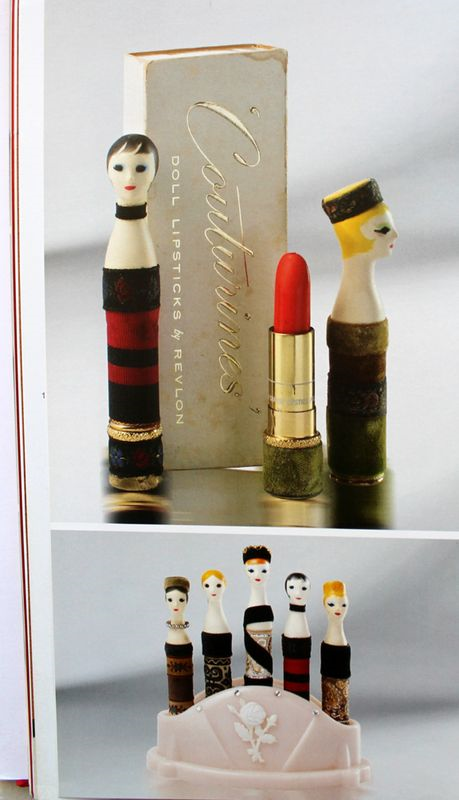
Aha! Looks like it's Jackie Kennedy (last one on the right.)
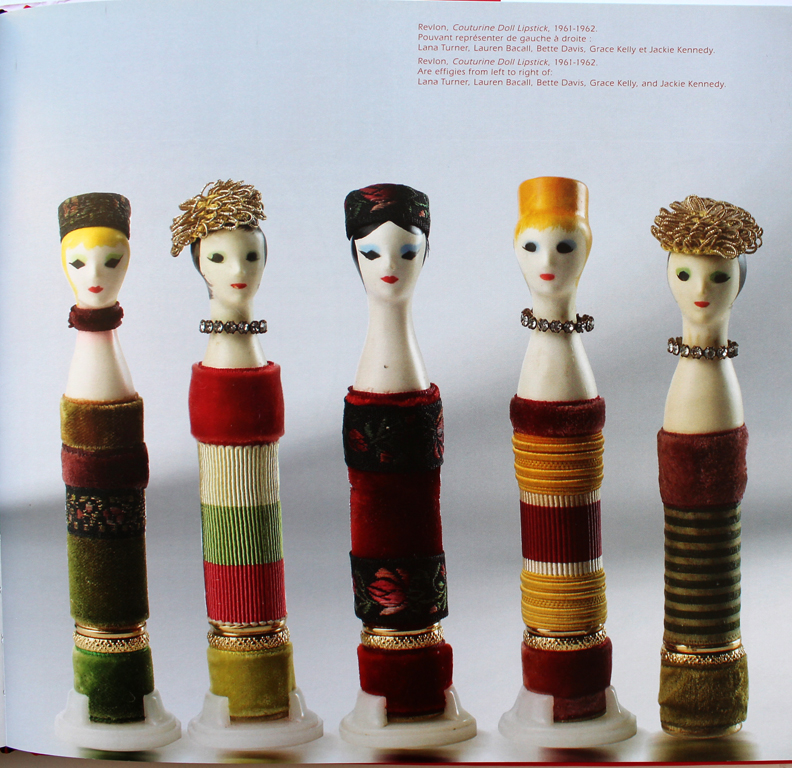
What's fascinating to me about the submitter's photo is that his doll appears to be wearing a little fur stole around her neck, whereas in the photo from the book she doesn't have one. As for the value, Revlon Couturines can fetch a pretty hefty price. Even though the photo is blurry, the one submitted to me looks to be in excellent condition. And given that she has a stole, which I'm assuming is original (the original Marilyn Monroe figurine has neckwear as well, which isn't shown in the picture in Lips of Luxury), that would probably increase the value. I think a fair asking price would be $150-$250. At the moment I don't even see any Jackie figurines for sale.
What do you think of these? This post reminds me that I really need to track down at least one for the Museum – I can't believe I don't own any. Another one (or 8) to add to the old wishlist.
Update, 2/6/2020: It only took 5.5 years, but I finally procured a few of these lovely ladies for the Museum!
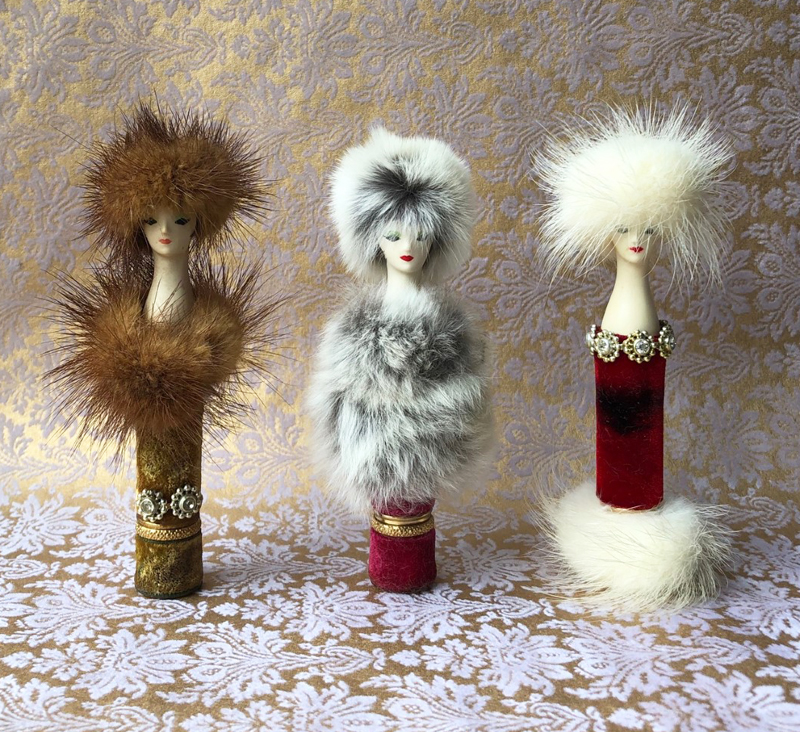
I am sorry to say that I can confirm these are not cruelty-free. As a matter of fact, Revlon made it a point to highlight the "genuine" mink, fox and chinchilla used. How times have changed. I'm also wondering whether all the ones listed for sale over the years as having brown mink are actually fox fur, as indicated in the ad below. Then again, this was the only ad I saw that referenced fox fur, so maybe the brown ones are mink as well.
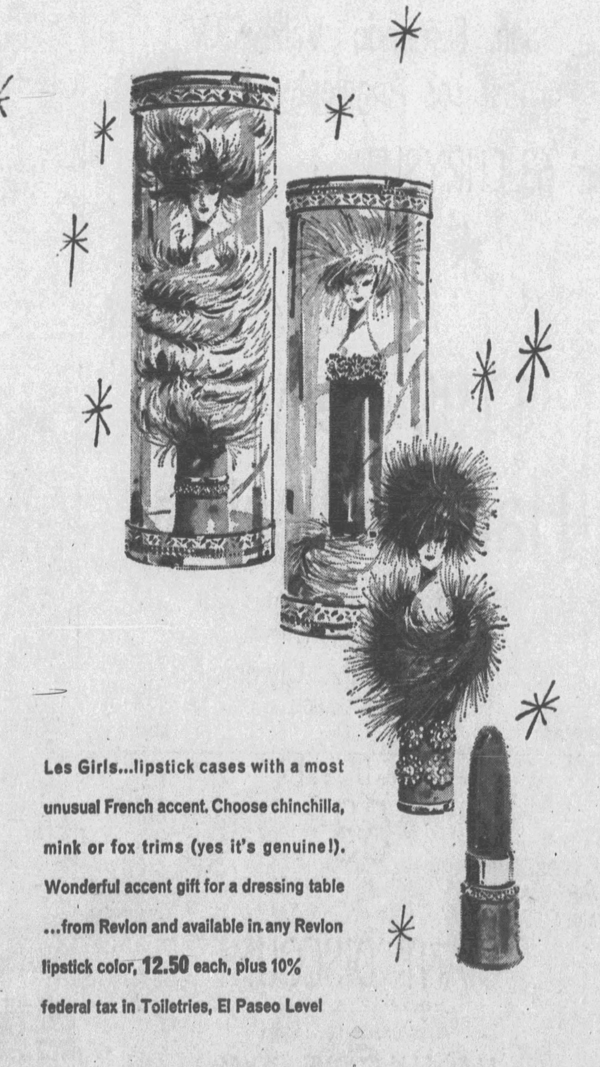
The white mink one is not in the best shape – there's a little bit of wear on the paint on her lips and discoloration around her "waist" – but she does have the original box. I'm suspecting the black mark is remnants of a belt, as shown here. (Apologies for changing the background in these photos but I was shooting across several days and was too lazy to retrieve the paper I had used originally.)
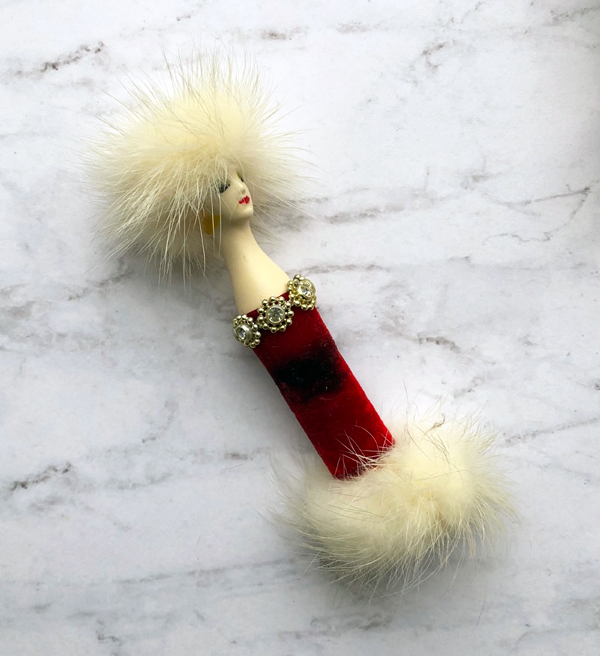
The chinchilla-clad lady, however, is basically new in the box. One hundred percent museum quality!
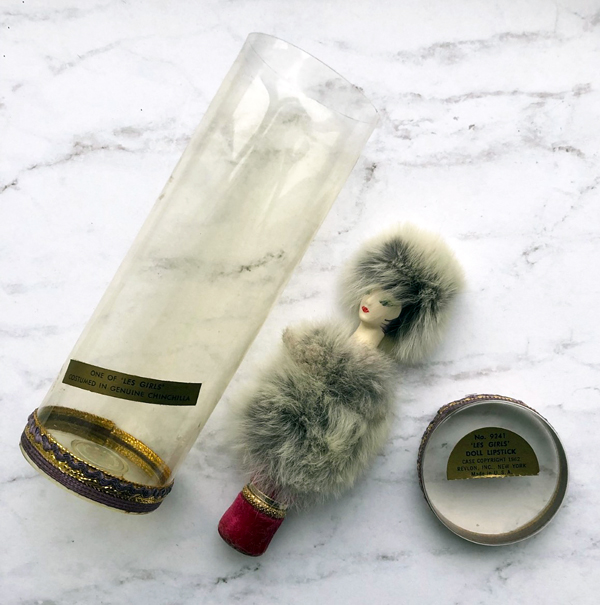
From what I was able to piece together from newspaper ads, the ones without animal fur were advertised as "mannequins" and originally released in 1961, while the chinchilla, fox and mink ones were referred to as "girls" and debuted during the holiday season of 1962. Both series fell under the Couturine name.
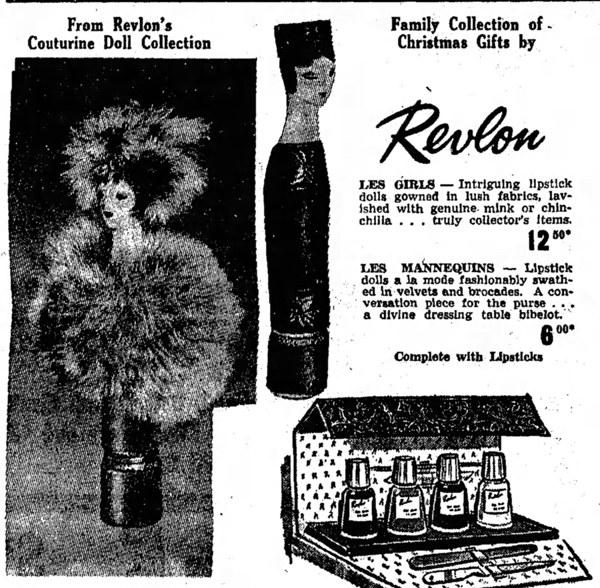
There were originally 12 designs, according to this ad. Of course, you paid a little more for the Mannequins with hats and jewelry.
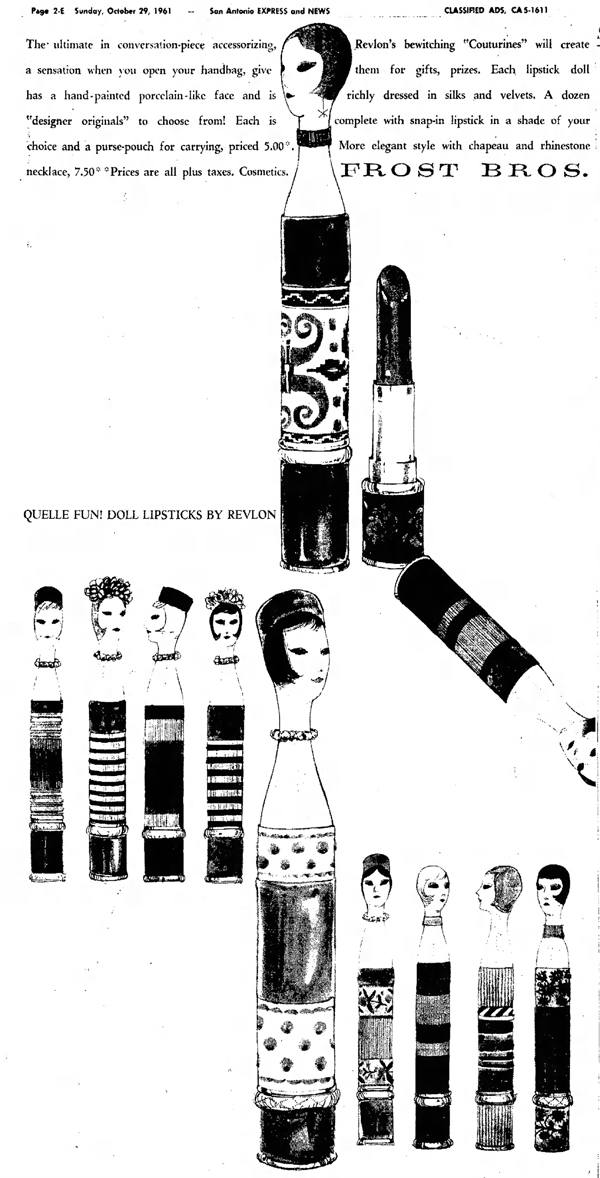
Most of them were similar but had a few details switched up. This is especially true for the Girls series. For example, the brown mink/fox one I procured has the same color velvet at the bottom and one pair of rhinestones, but the one in Lips of Luxury has pink velvet and 4 rhinestones. The colors of the velvet and type of fur were also mixed and matched.
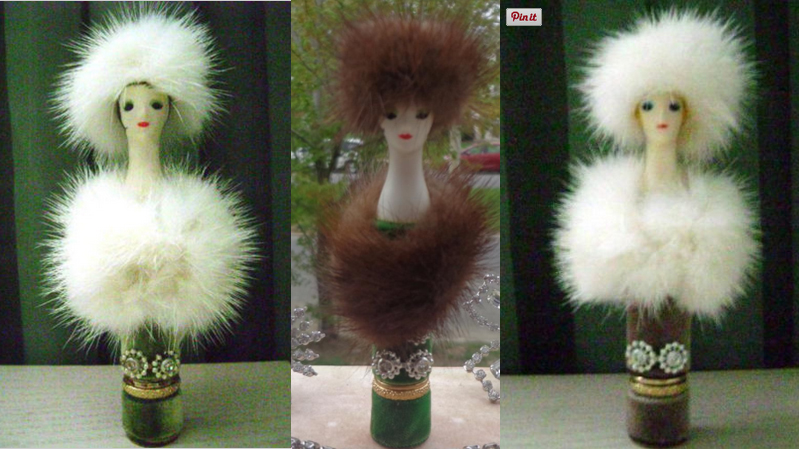
(images from Sun Shine)
But one question remains. I'm wondering where Jean-Marie Martin Hattemberg, whose book Lips of Luxury I referenced earlier, retrieved his information. Obviously I don't think he just made up the idea that each Couturine was intended to be a replica of an actress or other famous woman. But I'm so curious to know how he came to that conclusion since I've never seen them advertised or referred to that way anywhere other than his book. Perhaps he knew someone at Revlon who designed them? Or maybe they were marketed differently outside of the U.S.? In any case, there's no mention of the chinchilla Couturine and several other of the original 12 dolls in Lips of Luxury, so I'm not sure who they're supposed to be. Hopefully one of these days I'll solve another makeup mystery. 😉
Save
 Links and news for the first month of 2020.
Links and news for the first month of 2020.
– Enjoy this roundup of the beauty looks from the 1995 Oscars.
– The beauty market is so saturated, but this new line created specifically for people with albinism helps fill one of the gaps.
– Could F-beauty be the new K-beauty? I feel like every week a new country is chosen as the successor.
– The Guardian had an article on the rise of the "tweakment", which was quite timely for me as I've just had my first round of fillers and my second round of Botox. Unlike the author, however, obviously I'm not ashamed to tell people about it.
– There is a sizable beauty gamer community on Instagram, so it was only a matter of time before a makeup company seized the opportunity to co-opt it.
– I found this activist group an interesting counterpoint to Pinterest's new try-on feature. (Can you tell I'm not fond of any app or game that involves facial recognition?)
– You knew it was coming.
The random:
– I adore anything mini, so was very excited to discover this artist making tiny replicas of interiors from various eras.
– Great little post about street art in fashion. One of the chapters in my Art x Beauty book would definitely be the influence of graffiti in makeup.
– I rarely say this, but well-played, Baltimore. (In case you're wondering, it's a reference to this abomination.)
– You might remember my love for Maria Bamford's short-lived Netflix series Lady Dynamite. Fortunately her most recent special is just as funny.
How is 2020 treating you thus far?
Makeup Museum (MM) Musings is a series that examines a broad range of museum topics as they relate to the collecting of cosmetics, along with my vision for a "real", physical Makeup Museum. These posts help me think through how I'd run things if the Museum was an actual organization, as well as examine the ways it's currently functioning. I also hope that these posts make everyone see that the idea of a museum devoted to cosmetics isn't so crazy after all – it can be done!
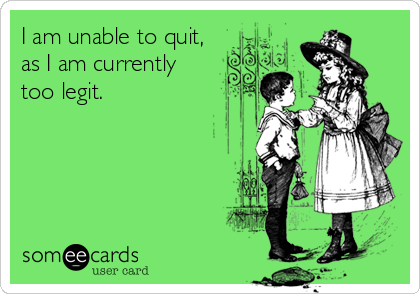 As I enter the 12th year of managing the Makeup Museum, I want to arrive at sort of conclusion as to its nature. The purpose of this exercise isn't to determine once and for all what a museum is or isn't, but how the various criteria and definitions laid out to date can be applied to the project I've been spending every ounce of spare time on for over a decade. The big question I want to tackle: Is the Makeup Museum a museum? If we examine the previous definitions and also consider what a museum is not, the answer is a resounding yes.
As I enter the 12th year of managing the Makeup Museum, I want to arrive at sort of conclusion as to its nature. The purpose of this exercise isn't to determine once and for all what a museum is or isn't, but how the various criteria and definitions laid out to date can be applied to the project I've been spending every ounce of spare time on for over a decade. The big question I want to tackle: Is the Makeup Museum a museum? If we examine the previous definitions and also consider what a museum is not, the answer is a resounding yes.
What makes a museum, well, a museum? Let's take a brief look into how various stakeholders across the globe have attempted to define it. The most recent efforts came in July 2019, when the International Council of Museums (ICOM) proposed an updated definition for the one they had established in 2007. The ensuing controversy and media coverage was actually the impetus for this installment of MM Musings. ICOM's previously agreed-upon definition of a museum was as follows:
“A museum is a non-profit, permanent institution in the service of society and its development, open to the public, which acquires, conserves, researches, communicates and exhibits the tangible and intangible heritage of humanity and its environment for the purposes of education, study and enjoyment.”
The new definition emphasized the need for inclusiveness and clarified that museums do not exist primarily to make money.
"Museums are democratizing, inclusive and polyphonic spaces for critical dialogue about the pasts and the futures. Acknowledging and addressing the conflicts and challenges of the present, they hold artifacts and specimens in trust for society, safeguard diverse memories for future generations and guarantee equal rights and equal access to heritage for all people.
Museums are not for profit. They are participatory and transparent, and work in active partnership with and for diverse communities to collect, preserve, research, interpret, exhibit, and enhance understandings of the world, aiming to contribute to human dignity and social justice, global equality and planetary well-being."
ICOM's definition was met with a swift backlash. Many organizations decried it not only for being too "ideological"/"political" rather than a straightforward definition, but also because it didn't distinguish between museums, libraries or cultural centers. (But I don't think the old definition did either? Also, what is a "polyphonic space"? Still scratching my head on that one.) In September, ICOM delayed their vote on the new definition with no new voting date scheduled. If the entire museum world cannot come to a consensus, obviously it's difficult to say how museums are defined. Having said that, I'm not sure why we can't agree on a definition that essentially combines the old and new proposals. Here's an excerpt from Time's coverage of the debacle in which a Danish curator states that it's not an either/or proposition. "'As museums become more and more conscious of the strong social role they play, there’s a need for a more explicit platform of values from which we work,' says [Jette] Sandahl, who is the founding director of the Museum of World Cultures in Sweden and the Women’s Museum of Denmark. 'Saying that museums can only fulfill traditional functions or play these new roles is what I feel we’ve outgrown in the 21st century.' Sandahl wants that 'or' to be replaced with an 'and.' She also firmly rebukes the criticism that the new definition has a 'political' tone: 'When you say that something is political or ideological, well, is it political to work with marginalized communities and women, as many museums are doing now, or is it political not to?'" I'm fully aware of the #MuseumsAreNotNeutral concept, and I think it can be added to the old museum definition. Hell, you can just copy and paste like so:
“A museum is a non-profit, permanent institution in the service of society and its development, open to the public, which acquires, conserves, researches, communicates and exhibits the tangible and intangible heritage of humanity and its environment for the purposes of education, study and enjoyment. Museums are democratizing and inclusive spaces for critical dialogue about the pasts and the futures. Acknowledging and addressing the conflicts and challenges of the present, they hold artifacts and specimens in trust for society, safeguard diverse memories for future generations and guarantee equal rights and equal access to heritage for all people. Museums are participatory and transparent, and work in active partnership with and for diverse communities to enhance our understanding of the world, aiming to contribute to human dignity and social justice, global equality and planetary well-being."
Was that so hard? You're welcome, ICOM. I'm kidding, obviously, but examining my combination of these definitions and seeing how it aligns with the Makeup Museum's activities demonstrates that the Museum meets the criteria outlined above, even if the art world can't be in perfect harmony.
Is the Makeup Museum a "non-profit, permanent institution in the service of society?" Check, check and check. I've never sold anything and have never aspired to make money off the Museum, which is why you've never seen ads here. I might need to pay for Google search ads down the line, but I won't ever have ads on the website. And while I recently experimented with a promoted post on Instagram, it was purely to increase the Museum's visibility in the face of some horribly unethical imitators who are actively trying to erase its presence. Since I don't sell anything or have ads at the website, obviously I don't make any money off of "clicks" (i.e. more website traffic doesn't equal any sort of monetary benefit); I was only trying to raise awareness that there is an existing makeup museum in the U.S. I can't even bring myself to do basic fundraising, and if the Museum occupied a physical space there would be free admission. As for permanence, I've been running this site for over 11 years and collecting for even longer. I don't anticipate stopping either activity soon, unless something really awful happens, so in that sense the Museum is permanent. And while I enjoy collecting for my own sake, the whole point of being online/trying to establish a physical space, which has been a goal since the Museum's inception, obviously means this little space of mine is "in the service of society". The internet is available 24/7 which means the Museum is always "open to the public". The next part of the sentence, "acquires, conserves, researches, communicates and exhibits the tangible and intangible heritage of humanity and its environment for the purposes of education, study and enjoyment" and part of the third sentence, "hold artifacts and specimens in trust for society, safeguard diverse memories for future generations" is essentially the Museum's mission statement:
– Preserve and document contemporary and vintage cosmetic items, both for beauty consumers and the general public.
– Promote these items as legitimate cultural artifacts by examining the history, design, and artistic inspiration behind them.
– Explore the sociological and cultural impact of makeup objects, including their usage and advertising.
– Research and record the history of the beauty industry and the culture therein.
– Educate the public on the artistic, cultural, and historic value of makeup from all eras through exhibitions and publications.
The other salient words in the ICOM definitions, "democratizing", "inclusive", "participatory" and "transparent" may seem a bit empty and meaningless in that sometimes business and politicians throw them around with no real follow-through, but the Makeup Museum strives to be all of these things. I'm very clear about how the Museum functions and where I obtain objects. It's a unpaid gig run by myself (with help from the husband and plushie staff) and everything outside of donations from random people – NOT anyone working for or affiliated with makeup companies – is paid for with my own money. I try to make sure the Museum is as "participatory" and "democratizing" as possible by laying out my ideas and asking the public to weigh in on what topics they'd like to see, and I invite comments on each post and exhibition.1 In fact, for the most recent exhibition I wanted to have a section for people to share their fond memories of Stila – alas, no one participated, but I plan on offering this feature for every exhibition going forward. And I love the idea of visible storage, which is a way of democratizing the collection itself.
Does the Museum work on "acknowledging and addressing the conflicts and challenges of the present?" Through discussing beauty's ugly side and recognizing the areas the industry still needs to work on, I'd say so. Another idea I'd like to implement is including information in posts and exhibition labels on whether a particular brand or object is cruelty-free, or if the company producing it is controversial in some way.2 Does the Museum "work in active partnership with and for diverse communities to enhance our understanding of the world, aiming to contribute to human dignity and social justice, global equality and planetary well-being"? Yup. Whether it's the countless links in Curator's Corner that lead to articles about the struggles of the art/museum/beauty industries with representation and diversity, intersectional feminist critiques of current and past beauty trends, or explorations of an ethical and environmentally-friendly museum, I think the Museum continually checks all these boxes. And as I mentioned in the past, inclusiveness and accessibility are topics to be covered in future MM Musing posts so as to lay out a concrete plan with specific steps to implement it.
Finally, I'd like to highlight that there's nothing in either of ICOM's definitions about a museum requiring paperwork stating it's a nonprofit organization or occupying a physical space. This brings me to another interesting point, which is the impact that online-only museums have. I was informed in December by someone who shall remain nameless that my museum wasn't real because it doesn't have a physical space. I wish I could somehow anonymously send her these articles about the advantages of online museums and how they can, in fact, be "real" experiences. Not only that, they can provide much more in terms of participation, inclusiveness, engagement and customized experiences. They're the wave of the future! Don't get me wrong, I'd still like to have a physical space. If some investor came along and offered to set one up for me entirely for free and without me having to lift a finger I'd do it – ideally the Museum would have both physical and online spaces. But since I have to choose how to spend my time and money, right now I'd rather go the extra mile to make a really amazing online space that would blow any building right out of the water.
Another point to consider is that we might not be able to determine the exact criteria that makes a museum, but we know when one isn't. The consensus among most museum professionals and the average museum visitor alike is that the new profit-driven organizations are not museums even though they have "museum" in their name. I've written before about the "Instagram museum" and why these places aren't really museums, and as this article suggests I acknowledged what little worth they have and considered incorporating more shallow yet fun concepts into a blueprint for a physical makeup museum – I KNOW my idea for a makeup sponge pit sponsored by Beauty Blender would go viral – but at the end of the day, the online space I've set up is more of a museum than not, and it's certainly more of a museum than these entities that are really just businesses in disguise.
So if the Makeup Museum is real, does that make me a real curator? Eh, honestly, I'd have to say the jury is still out. As I surmised in 2014, most people see me nothing more than a collector and blogger. Without a Ph.D. in art/related field or a degree in museum or curatorial studies, I'm not sure I could call myself a curator. Still, if the Makeup Museum is a real museum and museums should have a curator in place to, at the very least, oversee the collection, what does that make me? All I know is that in the 6 years since I discussed being a curator, I'm still considering the local curatorial practice MFA program that I mentioned in that post. Perhaps if I took the plunge and actually got accepted into the program, I might be taken more seriously. But that's a topic for another time.
In conclusion, after looking at various definitions and what a museum is not, I am now proclaiming the Makeup Museum in its current form is an actual museum. With that, here is the new intro for MM Musings:
Makeup Museum (MM) Musings is a series that examines a broad range of museum topics as they relate to the preservation, research and exhibition of cosmetics, along with my vision for a physical Makeup Museum. These posts help me think through how I'd run things if the Museum occupied a physical public space, as well as examine the ways it's currently functioning. I also hope that these posts make everyone see that just because the Makeup Museum does not have a physical space or official nonprofit designation, it is as valid as other museums, and more legitimate than many other profit-driven entities calling themselves "museums".
So what do you think about all this? Is the Makeup Museum a true organization or is it as real as Santa Claus?
1 AAM's most recent issue of Museum magazine had a great article on how curators are trying to engage more actively with their local communities and ask people directly what they'd like to see for wall labels, exhibition topics and the objects included.
2It was Michelle Hartney's amazing "Correct Art History" piece that got me thinking about including some uncomfortable truths in exhibition labels. Indeed, the impact of her groundbreaking work spurred a worldwide conversation about museum wall labels.
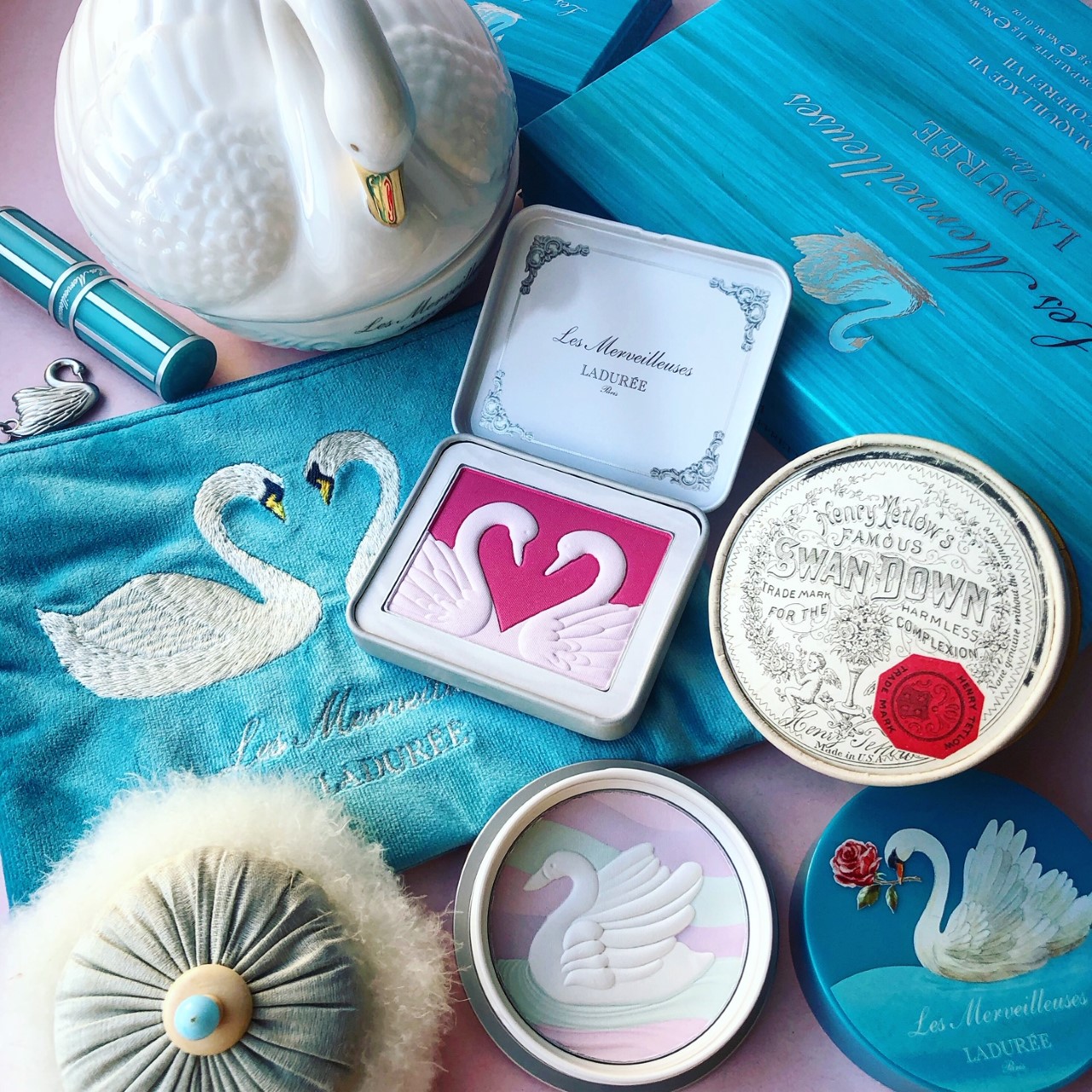
I'm thinking there has to be a vintage makeup fan among Les Merveilleuses Ladurée's design and marketing team, since their holiday 2019 collection carries on the tradition of yet another popular motif for beauty packaging: the swan. This graceful bird also ties into the company's commitment to infusing their line with the style introduced by the Merveilleuses. Let's look at the collection and all its downy soft details.
Can I just say how much I love the color scheme? The blue is so perfect – not too bright, not too aqua, not too dark – and plays amazingly well against the pink and white of the makeup shades and swan imagery. First we have the brightening powder. The outer case depicts a swan holding a rose in its beak, while the powder itself is embossed with a white swan swimming in a pastel-colored lake.
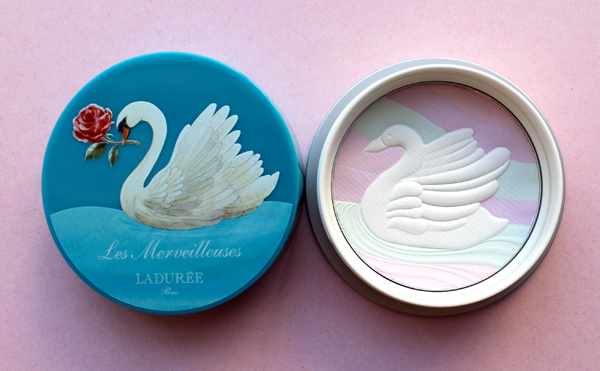
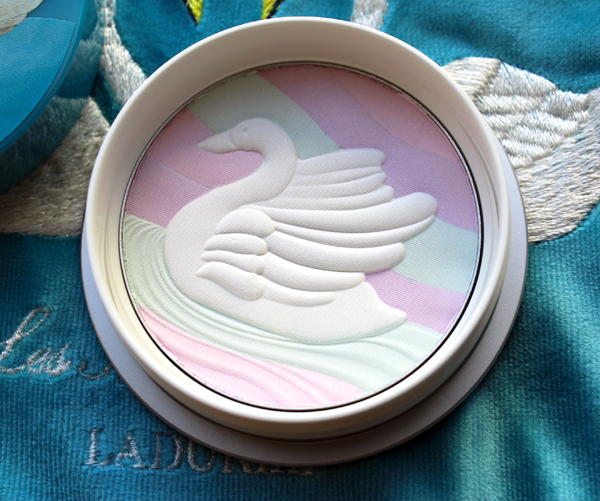
Next is this beautiful set containing a double swan-embossed blush and lipstick, housed in a blue embroidered pouch with a tiny silver swan for the zipper pull.
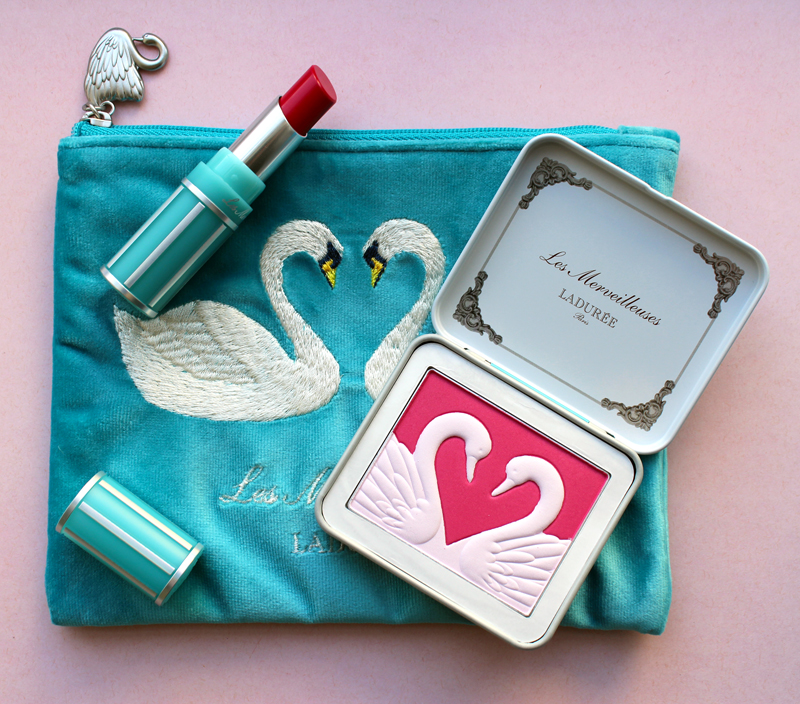
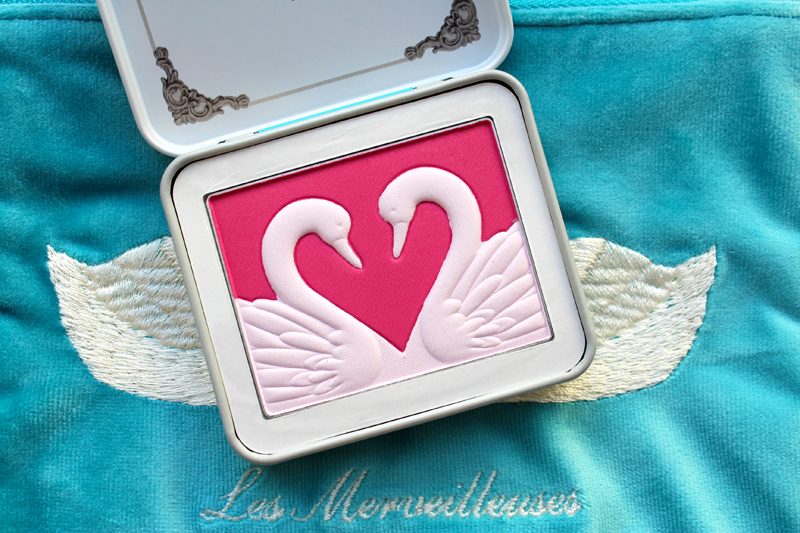
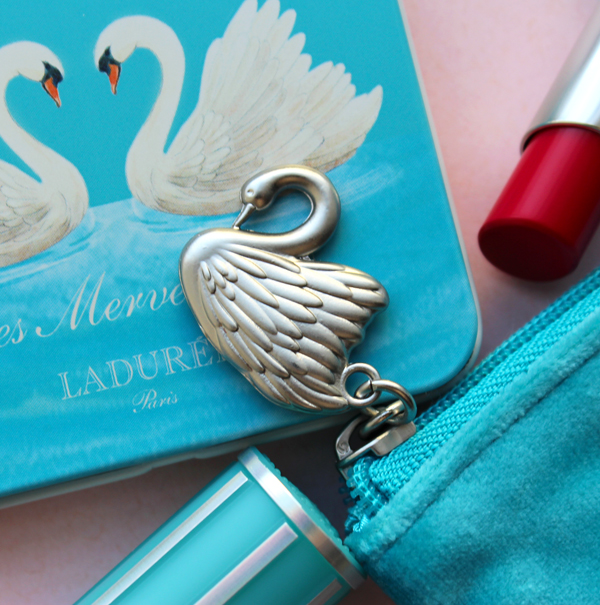
Lastly is the star of the collection, a white swan-shaped jar filled with blush "roses". LM Ladurée is famous for their blush resembling rose petals, but these are next level.
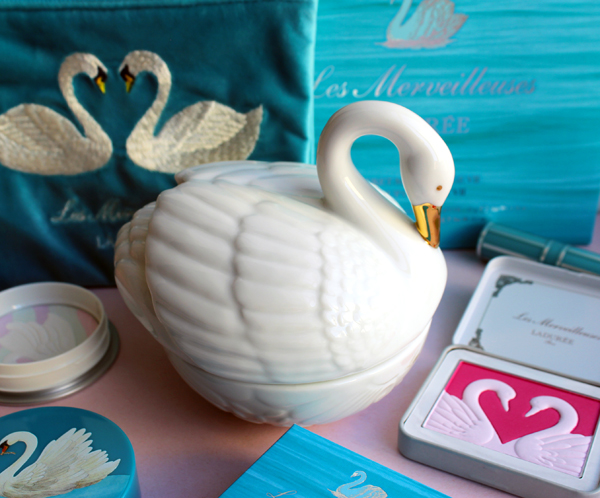
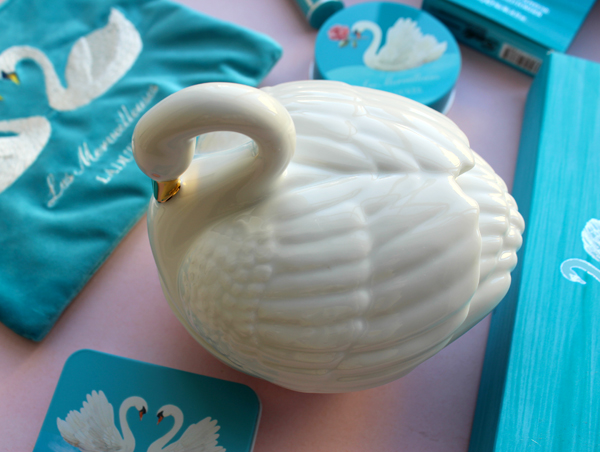
I couldn't bear to open the blush itself, but it looks like this.
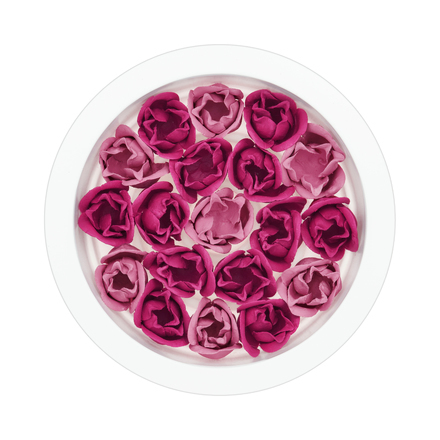
(image from bonboncosmetics.com)
Even the box is gorgeously printed with pristine white swan feathers.
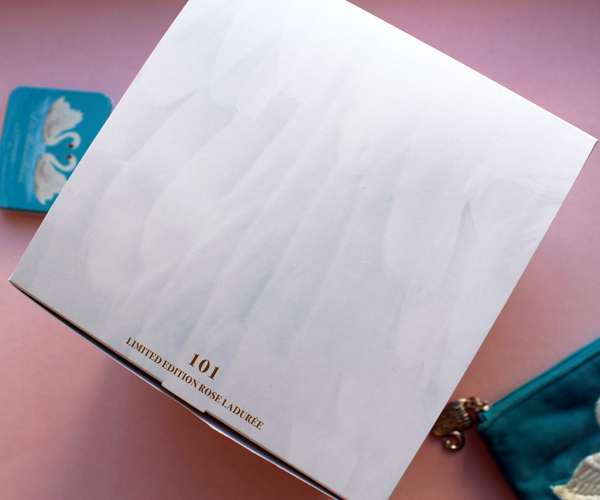
So how do swans relate to the Merveilleuses? Prior to becoming Empress in 1804, Josephine was one of the most revered Merveilleuses, possibly even more so than Madame Recamier. While the more over-the-top Merveilleuse trends generally died down after Napoleon rose to power, Josephine was still considered a top arbiter of style. During her time as Empress she also adopted the swan as her signature motif. According to the Met: "At the approach of danger, with feathers puffed up and anxiously hissing, these birds protect their young within the wall of their white wings. Napoleon's consort, Josephine, and her children were frequently compared to a swan and its cygnets. The swan was chosen as her symbol by Claude, wife of Francis I, the French Renaissance king whom Napoleon greatly admired." Thus the reason for the abundance of swan decor at her and Napoleon's residence, the Château de Malmaison.
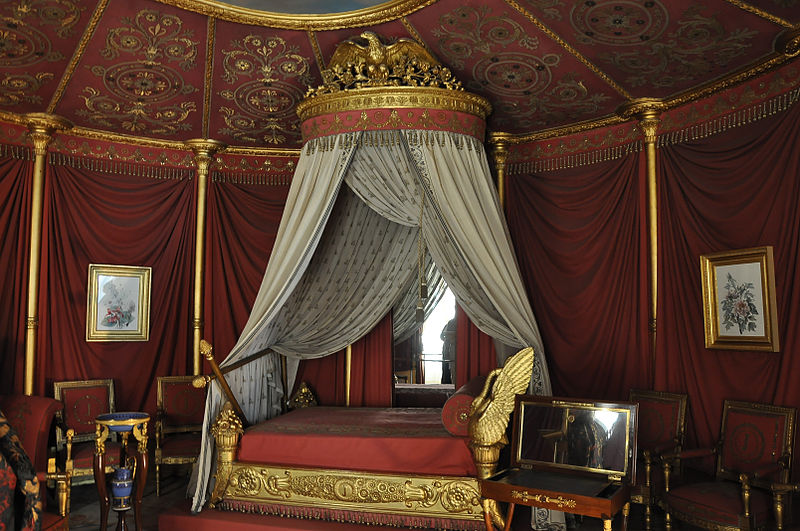
(image from wikimedia.org)
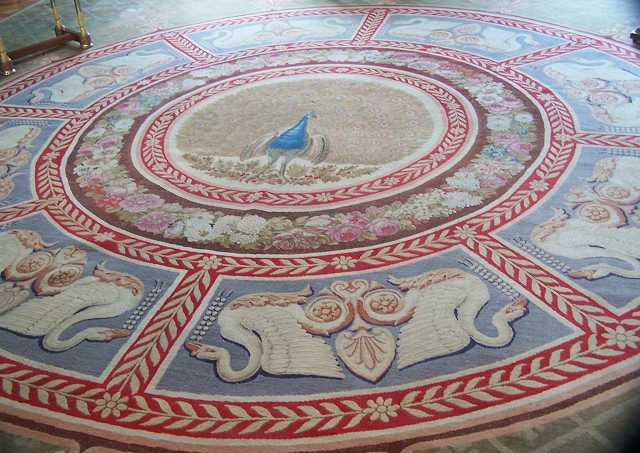

(images from ssa.paris.online.fr)
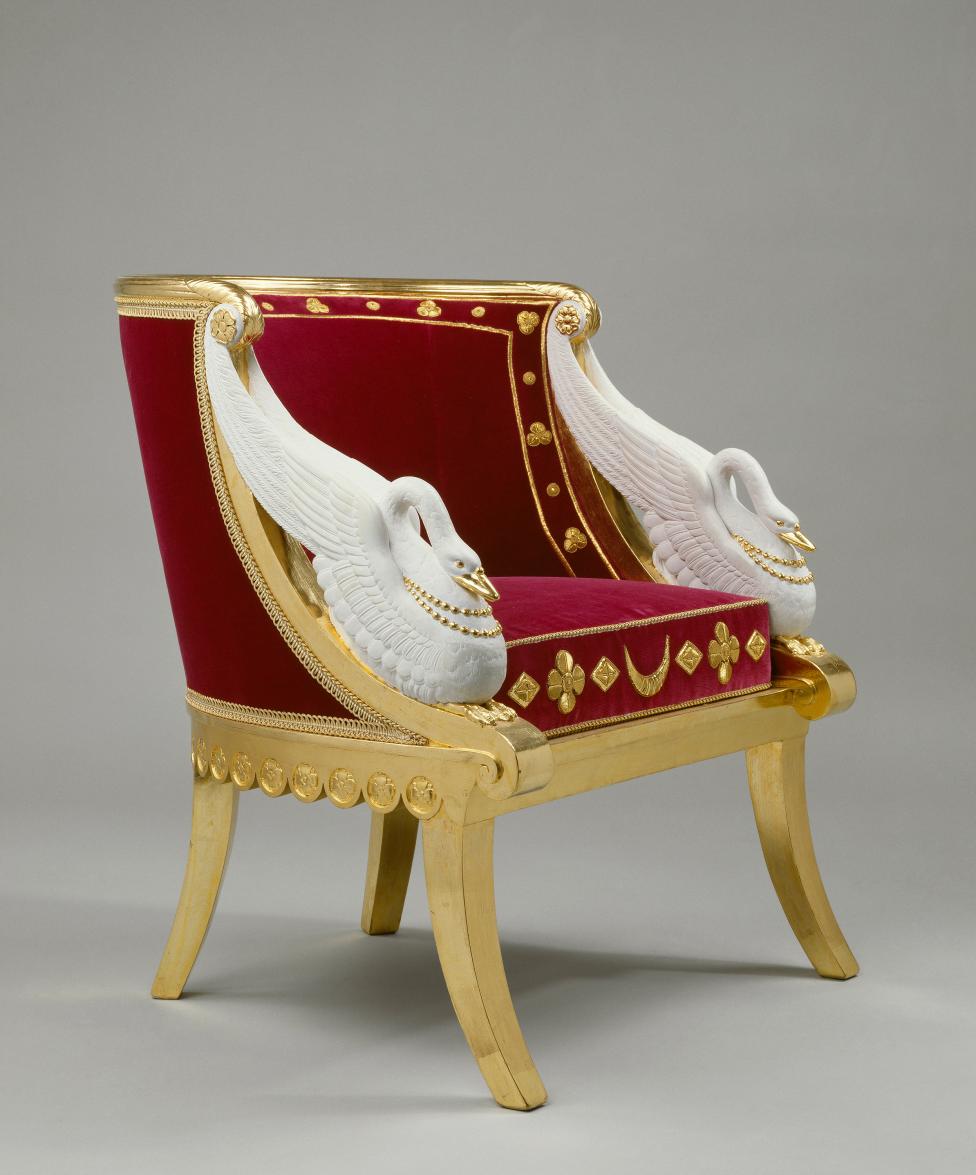
(image from the National Gallery of Victoria)
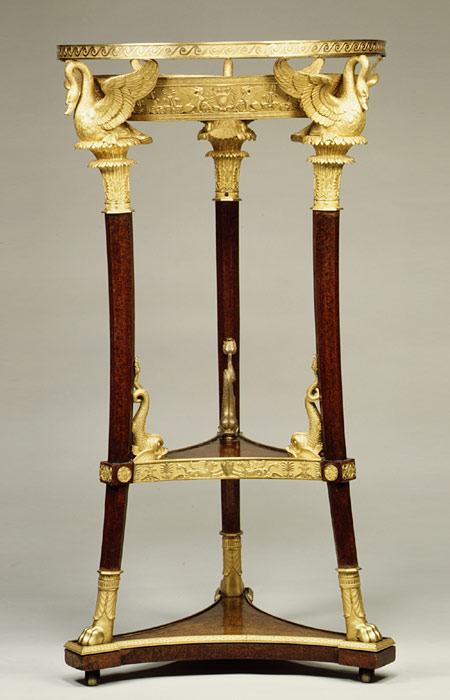
(image from metmuseum.org)
The Empress even had black swans imported from Australia and kept them as pets, along with emus and kangaroos. Sadly the swans outlived her. :( Anyway, while the swan motif correlated more to the aesthetic of a post-Directoire era Josephine, its incorporation into LM Ladurée's holiday collection is a subtle nod to one of the original Merveilleuses.
In addition to serving as one of the Empress's emblems, swans have a long history in the world of cosmetics, most likely since they are one of the symbols associated with Aphrodite/Venus, goddess of love and beauty.1 Vintage compacts with images of swans abound.2

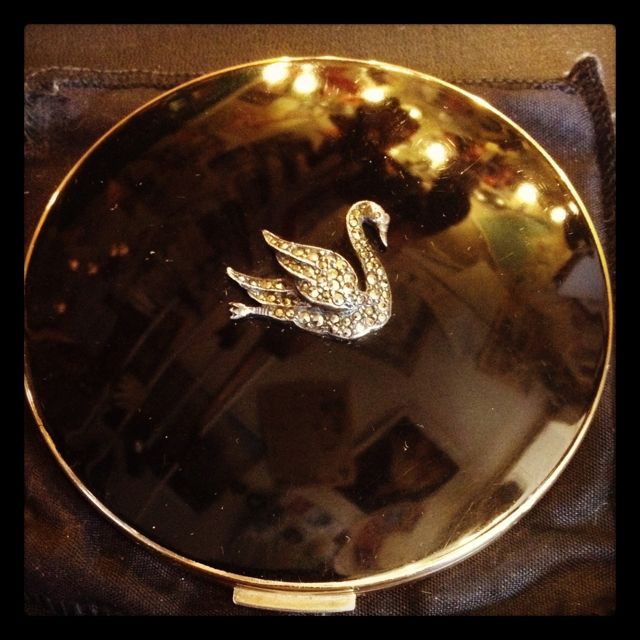
(image from pinterest)
This one has a really interesting history behind it, the Etsy seller dug up some great information on it.
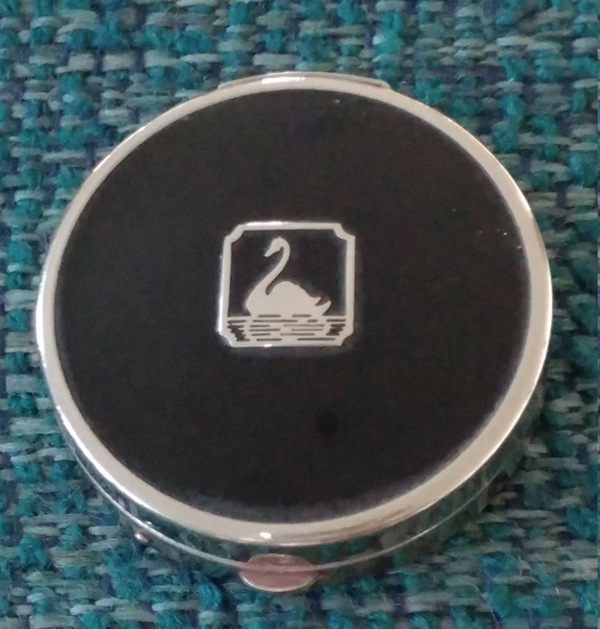
(image from etsy)
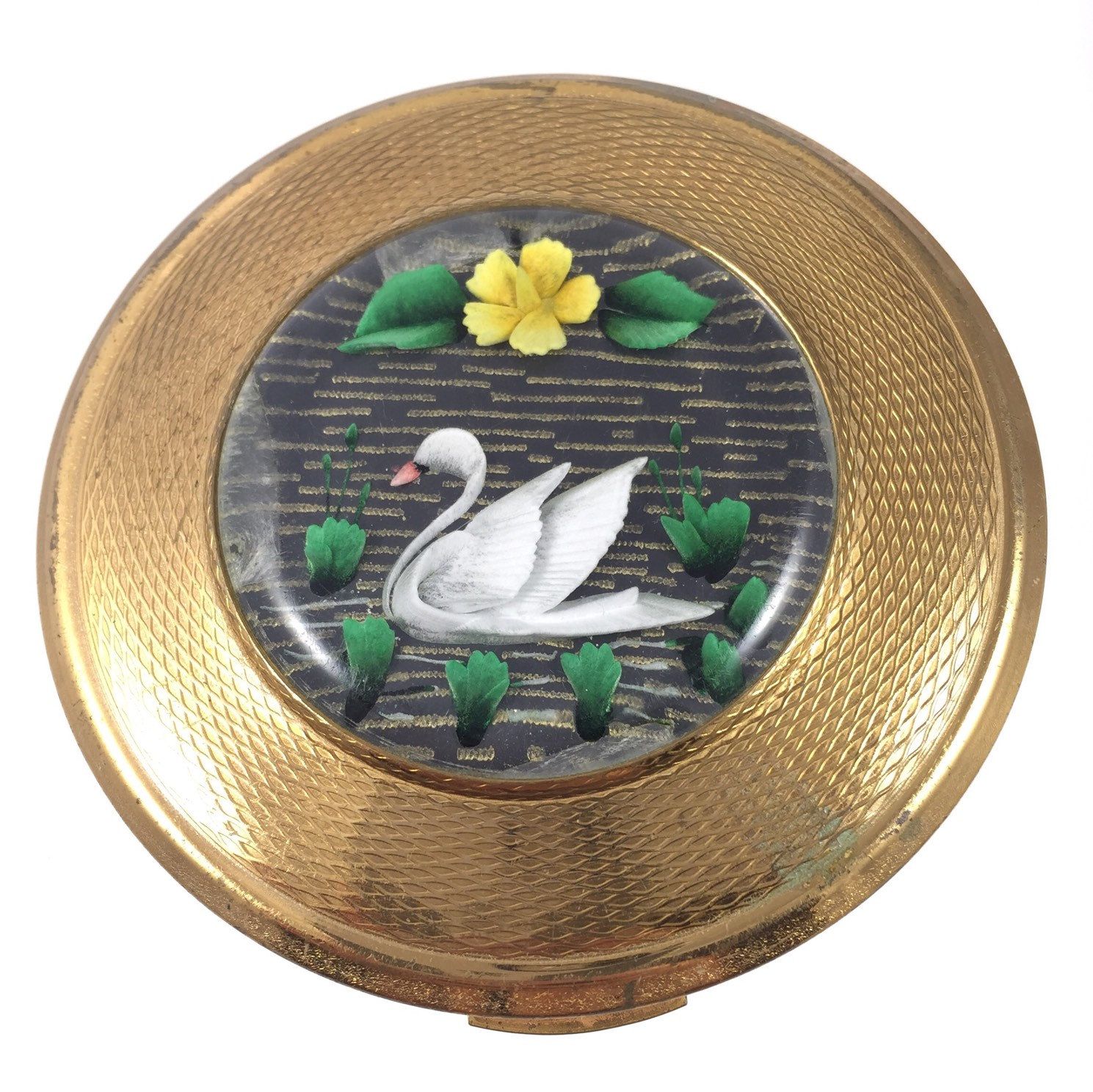
(image from etsy)
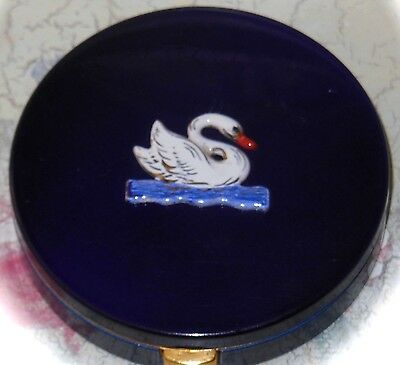
(image from ebay)
Coty's "Golden Swan" sets were perennial holiday favorites from about 1950-1955. I stumbled across some newspaper ads for them, and lo and behold this great blog on Coty's history had an actual photo.
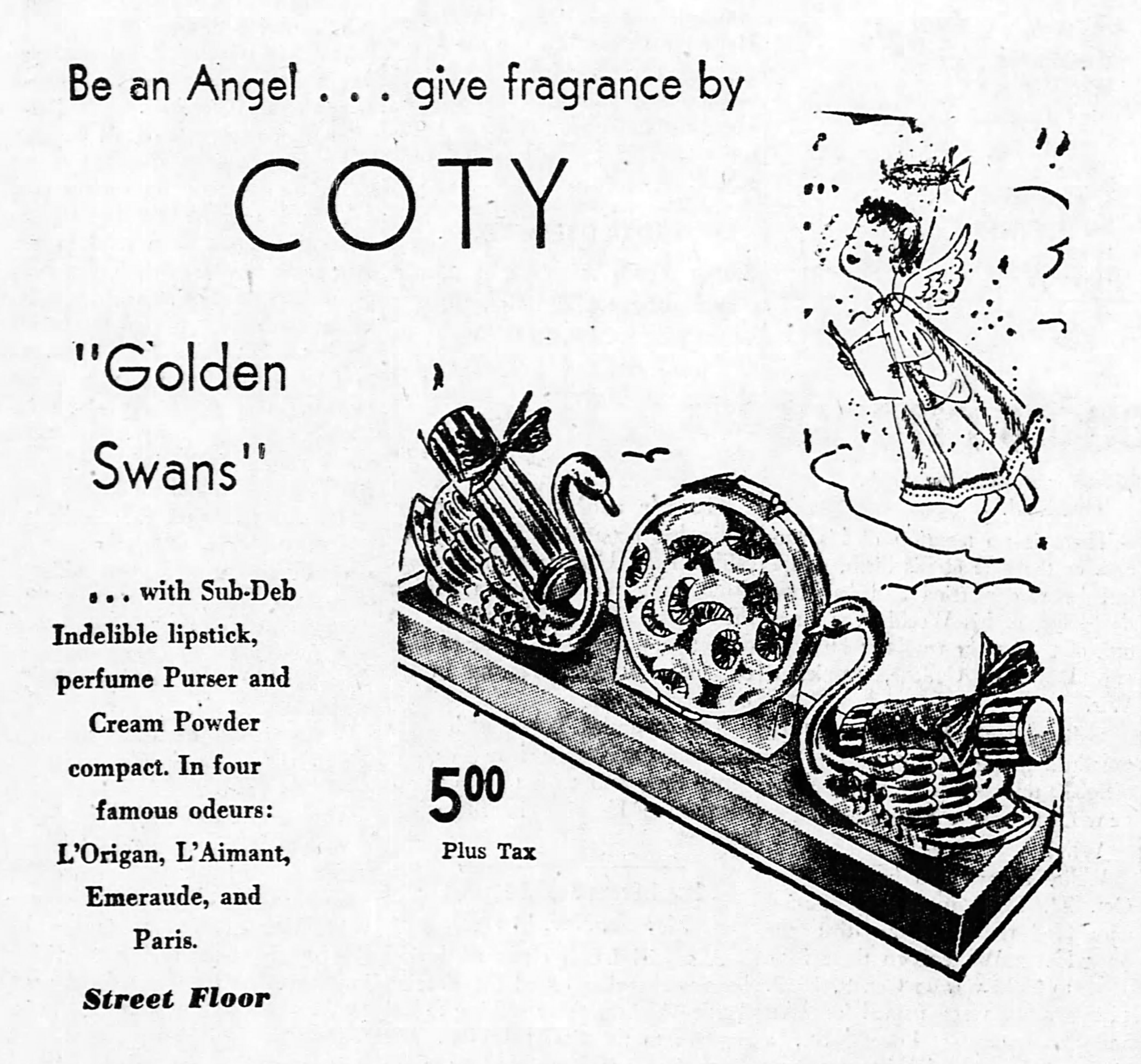
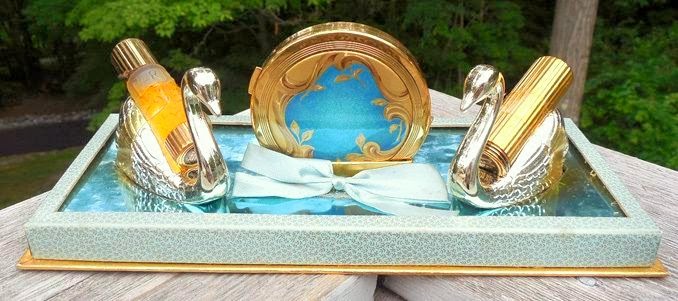
(images from newspapers.com and cotyperfumes.blogspot.com)
I couldn't find a real-life photo of this swan lipstick bouquet but it's fantastic. I'm guessing they're copying and expanding on the concept of Max Factor's popular flower pot lipstick set, which debuted in 1969.
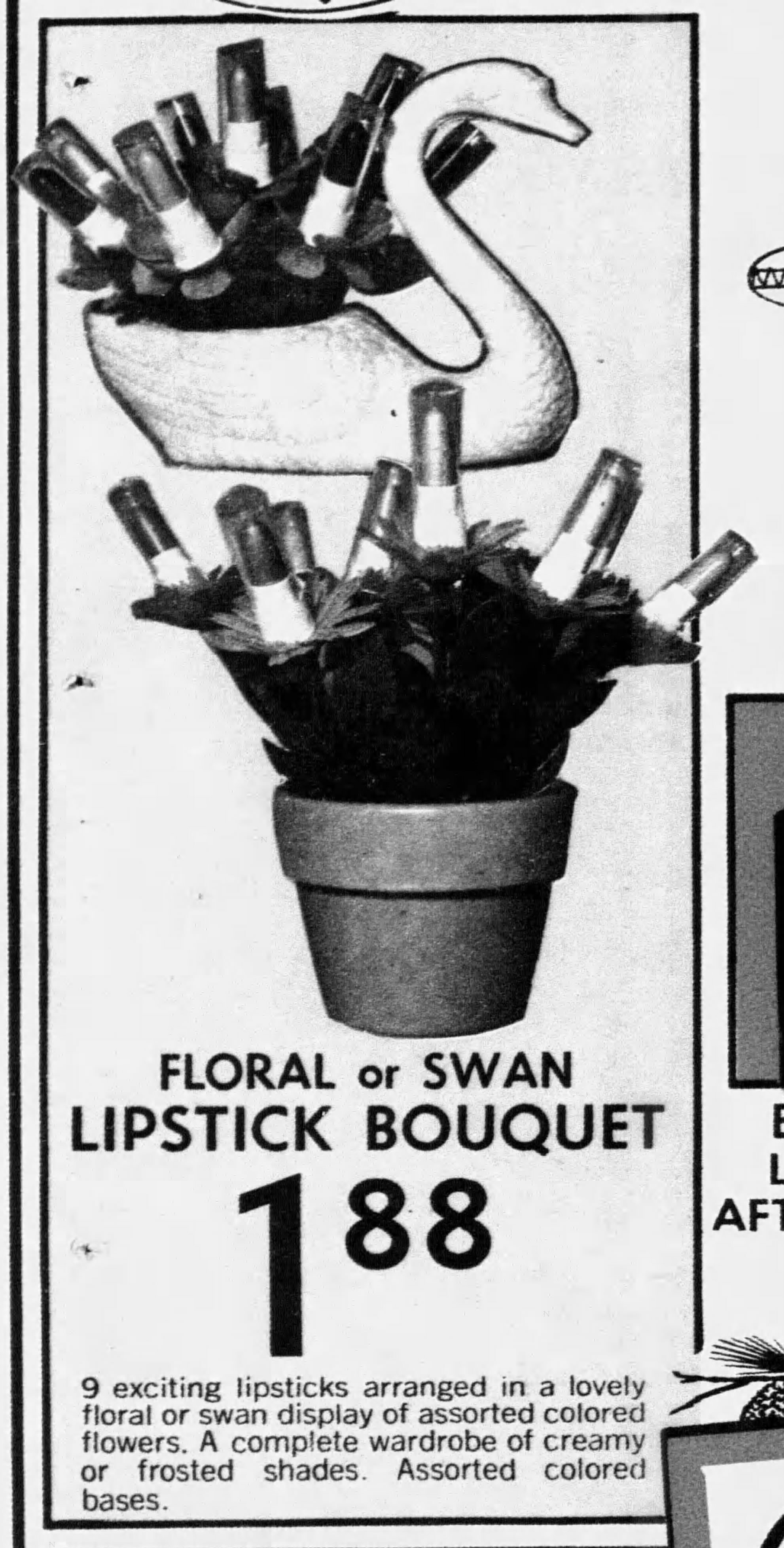
I couldn't resist picking up a few vintage swan items for the Museum, including these adorable lipstick hankerchiefs (ca. 1940s-50s) and a lipstick case (ca. 1980s).
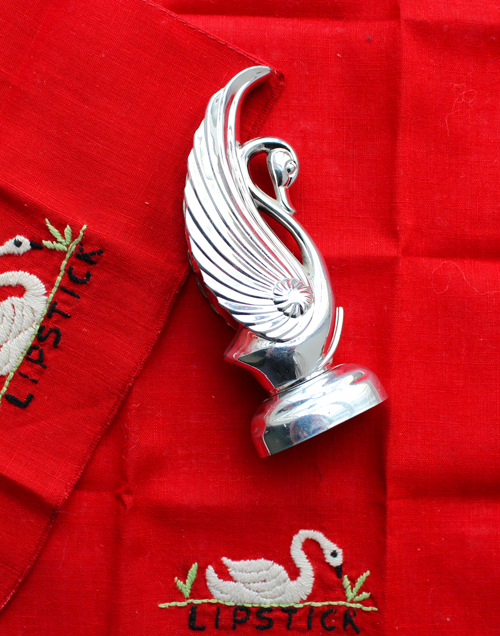
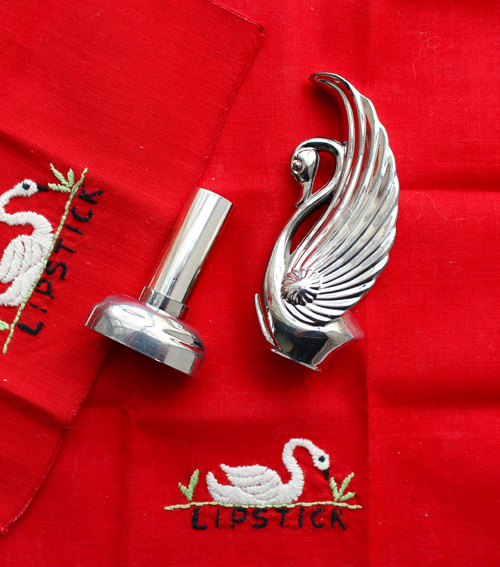
I think this vintage powder jar may have been LM Ladurée's inspiration. They came in a variety of colors, and the little niche created by the swans' wings was intended to store a lipstick.
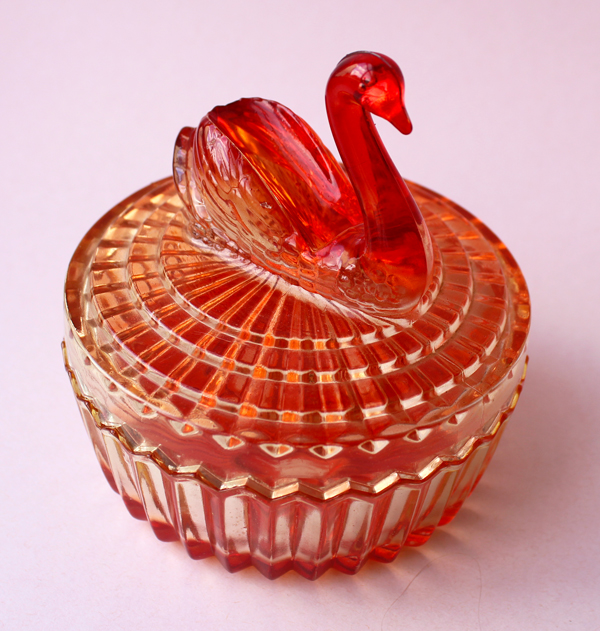
All of these are lovely, but Tetlow's Swan Down face powder and accompanying ads are my favorite vintage swan-themed pieces…and they don't even depict swans on the outer packaging! Tetlow's Swan Down powder was introduced in 1875 and sold through the early 1930s. Collecting Vintage Compacts has a very thorough history of Henry Tetlow if you'd like to read more.
I was so pleased to get this one in good condition for the Museum along with an original ad.
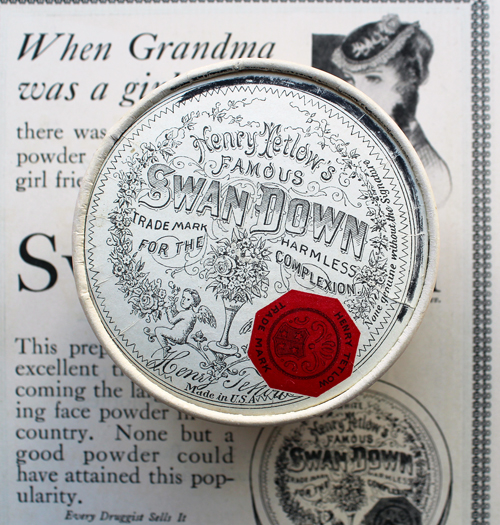
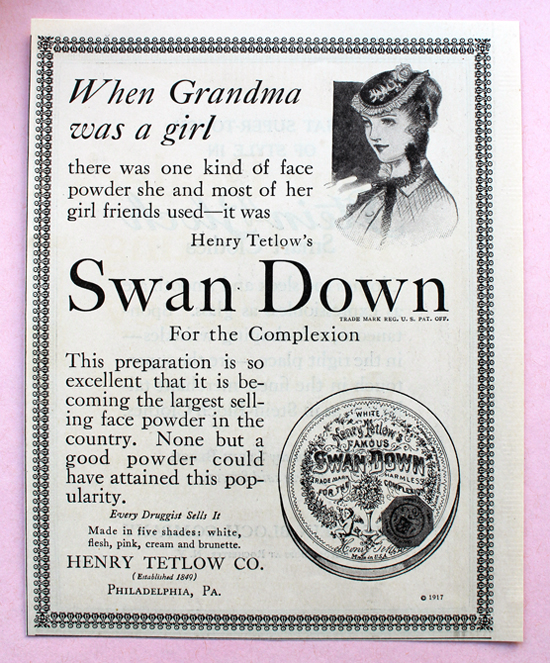
While the one I have is in good shape, I'd love to own one of these boxes that still has the swan insert!
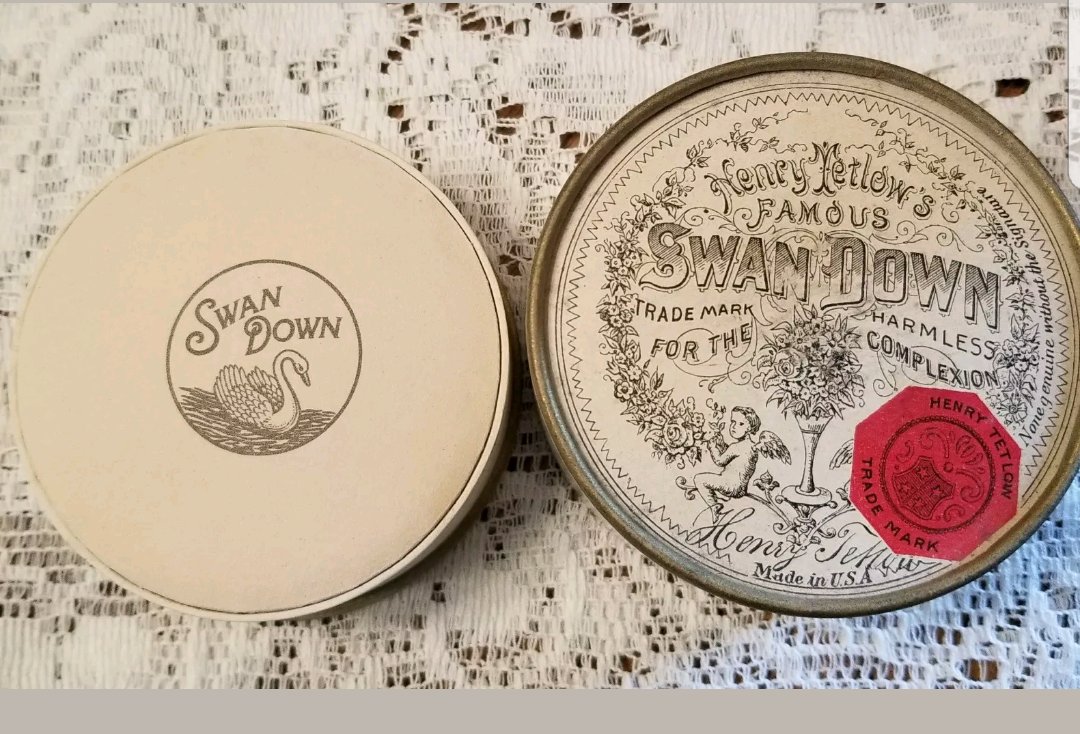
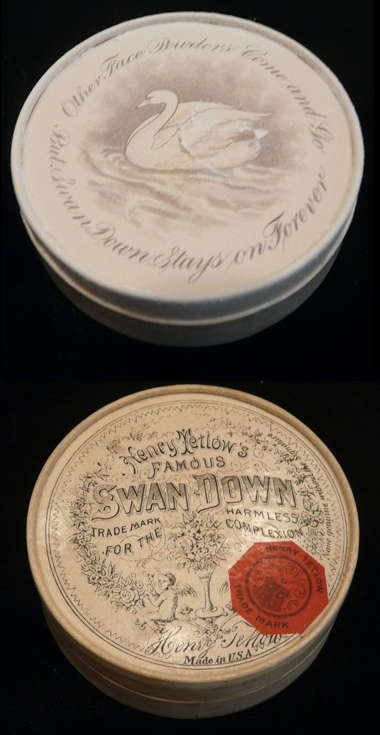
(image from cosmeticsandskin.com)
As was the case for many goods in the late 1800s and early 1900s, Tetlow's used small trading cards to advertise Swan Down. The portraits depict various stage actresses and other fashionable ladies of the time. The fan shape is a nice touch.
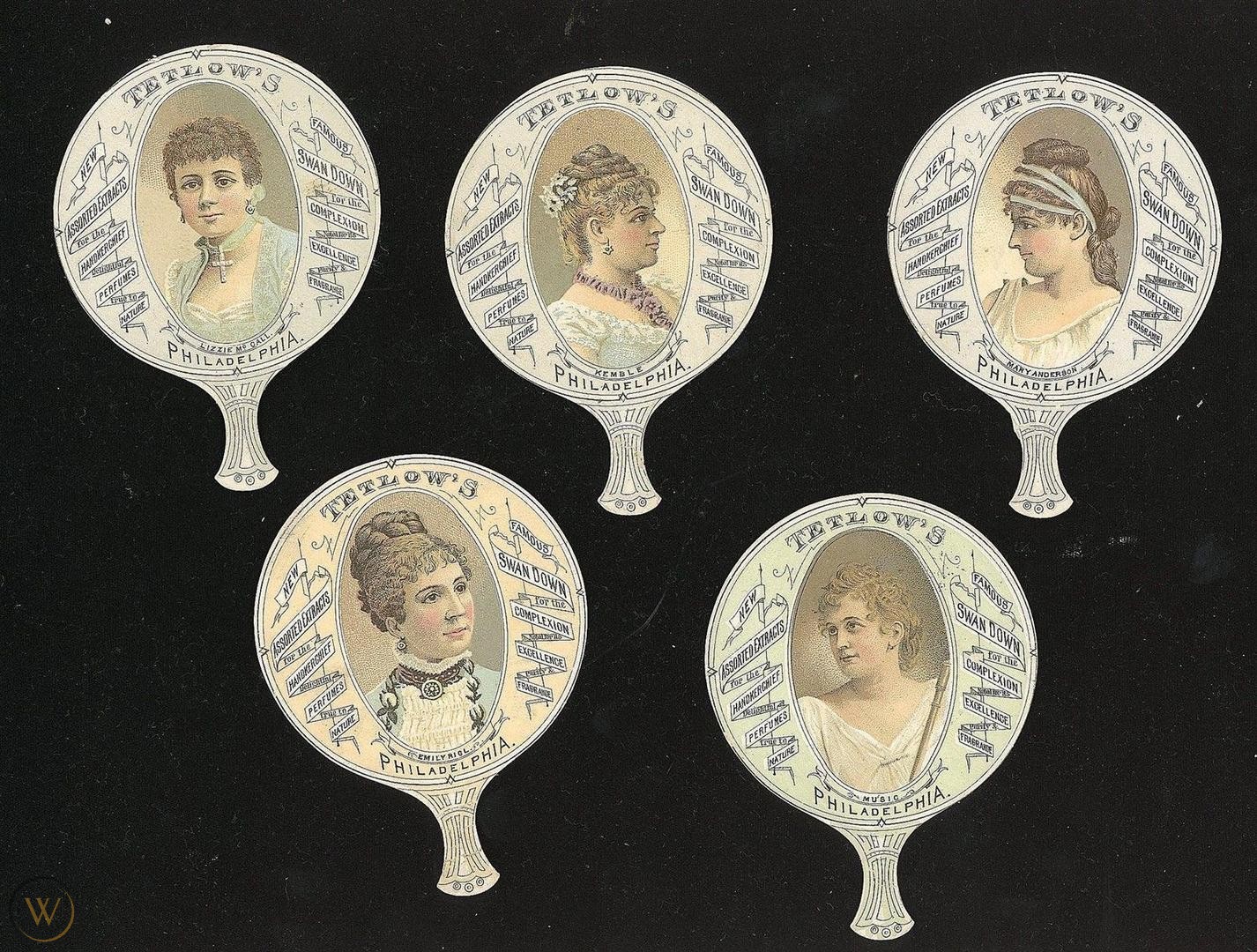
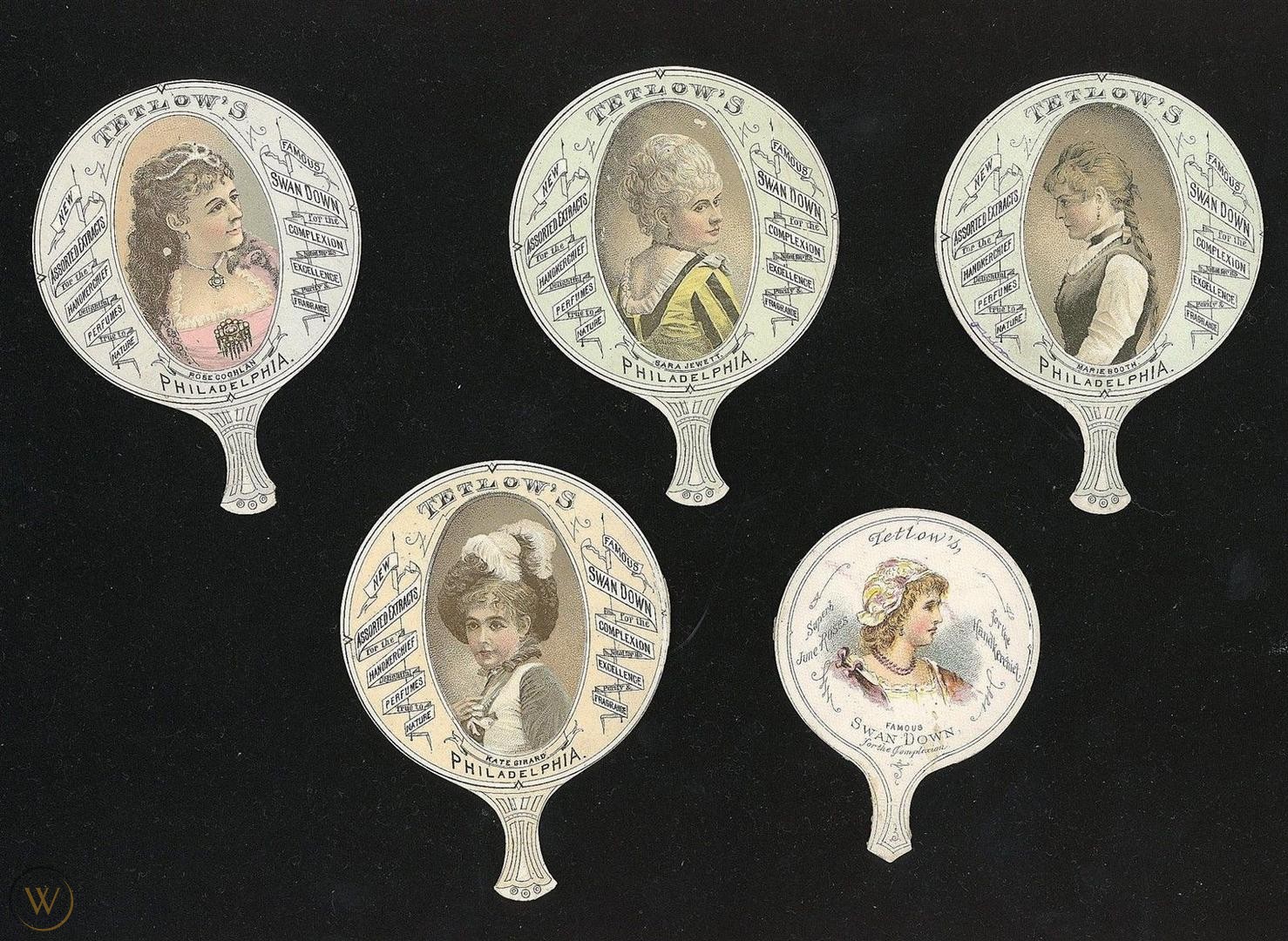 (images from worthpoint.com)
(images from worthpoint.com)
Another item I've become rather enamored of are vintage swan's down puffs. Before the dawn of synthetic brushes and puffs, in the Western world swan's down was one of the most common materials to apply powder in addition to silk and lambswool. The swan's down really is incredibly soft! (I forgot to take a picture of the vintage puff I bought…stay tuned for an update.)
I would love to try it out and compare it to my softest squirrel hair brushes but it's so fragile I'm afraid it would get ruined. And as I learned, vintage swan's down puffs are not cheap, especially the ones with sterling silver handles (drool).
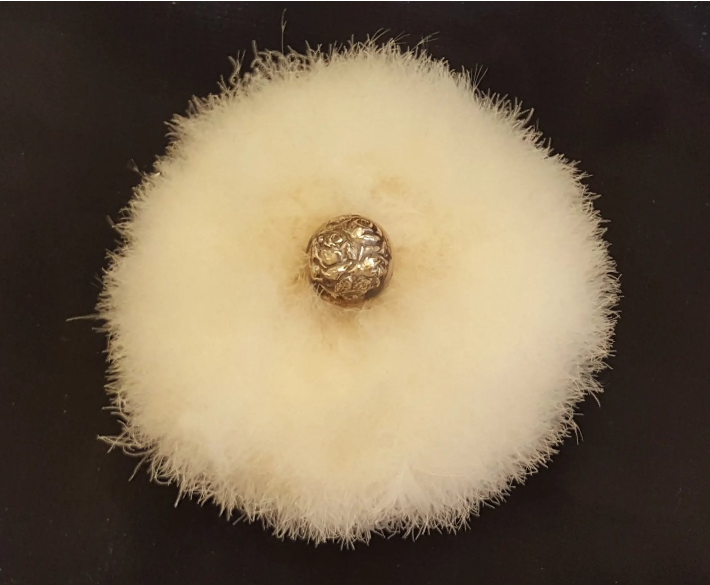
(image from rubylane.com)
Fast-forward to the 21st century, when some more swan-themed items joined their vintage counterparts. Here's what I'm sure is an incomplete group. Also, I guess I should give an honorary mention to Etude House's 2015 Dreaming Swan collection, which oddly enough did not feature any swans on the packaging.
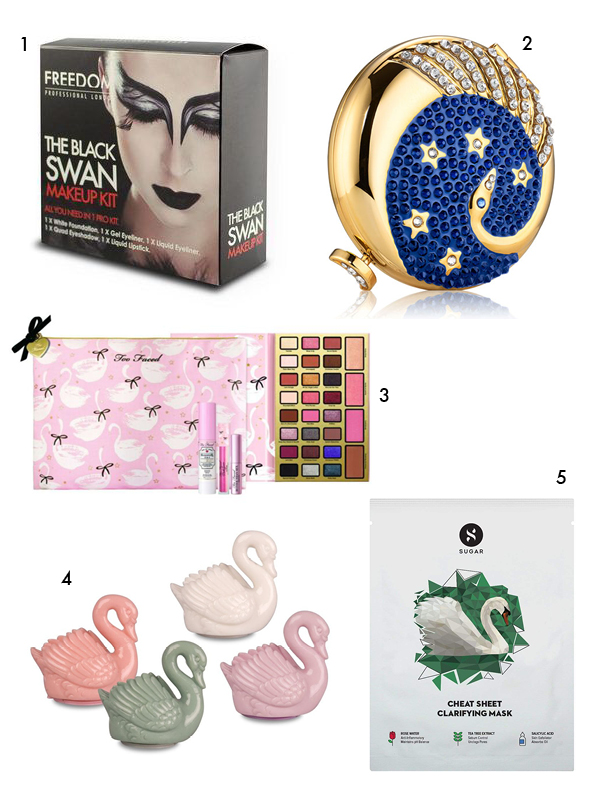
- Who can forget the frenzy over the makeup for the 2010 film Black Swan? This kit contained each element of the look.
- Monica Rich Kosann designed the Swan Dreams powder compact for Estée Lauder's holiday 2018 collection.
- Too-Faced's holiday 2018 Dream Queen set also featured swans.
- One can never have enough novelty lip glosses.
- Sugar Cosmetics chose a swan for their clarifying sheet mask packaging.
Finally, here are the other contemporary swan treasures in the Museum's collection: a Paul and Joe eyeshadow from their fall 2010 collection and Guerlain's spring 2018 Blanc de Perle compact, which was a collaboration with Ros Lee.
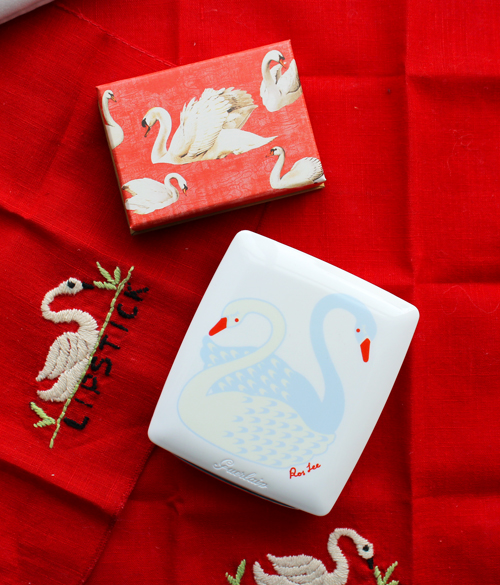
So that about wraps it up! What do you think of the swan motif both for Empire-era decor and makeup? Which piece here is your favorite?
1Swans are also associated with Apollo and music so that explains their inclusion in LM Ladurée's holiday 2017 collection, which shows them with a lyre.
2Tons of other vintage non-makeup beauty items use swans in their advertising and packaging, including Dior Miss Dior perfume, Cashmere Bouquet soap, Swan soap, and J. Lesquendieu face cream. Obviously I want to keep the focus on makeup but they were worth a mention.
As I did back in January of 2016, I feel the need to discuss some ideas I've had rattling about in my head for quite some time. I could basically copy and paste from that post since I didn't make any progress, but perhaps 2020 is the year I actually start tackling some of the bigger Museum projects I've wanted to pursue for so long. Or not. I'm not putting pressure on myself, especially since, as I've noted countless times, the necessary resources – research materials, time and money – are lacking. The point of this post is to simply get down some ideas so that they can temporarily stop taking up so much room in my head and to possibly start prioritizing them.
First, let's talk exhibitions. Four years ago I had ideas for 15 of them. The number hasn't changed, although the topics for some of them have. Here's what I'm thinking about, along with working titles. I'll reiterate the disclaimer I had with the Stila girls exhibition: if/when these are completed, they won't be executed anywhere near how I envisioned, but they will be something to start with.
- "Black and Blue: A History of Punk Makeup" – A subject so near and dear to my heart deserves a solo show.
- "Catch the Light: A History of Glitter Makeup and Beauty" – I think this would be perfect for a holiday exhibition.
- "The Medium is the Message: Makeup as Art" – This will trace how makeup is marketed and conceived of as literal art. Consider it a comprehensive discussion of this post.
- "Wanderlust: Travel-Inspired Beauty" - I cannot for the life of me believe how many travel-inspired makeup collections there are. This exhibition would examine those and discuss the idea of makeup intended for travel. Who wants to see some vintage train cases?
- "Design is a Good Idea: Innovations in Cosmetics Design and Packaging" - I'm hoping this would be co-curated with two fashion/design scholars that I met on Instagram.
- "Taking Flight: Makeup as Metamorphosis" - I'm still a little fuzzy on the details, but I know I want to have a whole section of makeup packaging featuring winged creatures (butterflies, fairies, etc.) and makeup looks inspired by them. Anchoring the exhibition would be an emphasis on the transformative nature of makeup.
- "Gilded Splendor: A History of Gold Makeup" – Another good holiday exhibition topic.
- "Ancient Allure: Egypt-Inspired Makeup and Beauty" - While I like this topic, it's necessary to be mindful of the rampant cultural appropriation.
- "Just Desserts: Sweet Tooth Revisited" – Like a rich dessert, this topic is too good not to have another bite of. I might also expand it to include non-dessert food-themed beauty, and maybe this very talented writer could co-curate with me.
- "Aliengelic: Pat McGrath Retrospective" – Oh, how I'd love to do an exhibition devoted to Pat McGrath, with a stunning catalogue that would double as a coffee table book. Alternate title instead of Aliengelic: "The Mother of Modern Makeup".
- "By Any Other Name: The Rose in Makeup and Beauty" – I pitched this idea to the FIT Museum as a small add-on to their upcoming "Ravishing" exhibition. They weren't interested but I might just do it anyway.
- "From Male Polish to Guyliner: A History of Men's Makeup" – this will be huge. Various writers have discussed it previously, but I want to go really in-depth with it.
- "She's All That: Beauty in the '90s" – This is also the subject of the book on '90s beauty I've been wanting to write since at least 2014. Not a great message in the film She's All That, but I would hope the premise of the exhibition/book will explain why I chose it as a title. Or I might rework it to something totally different, I don't know. And while I know I'll run into the same problems I did with trying to launch this exhibition previously, I figured I need to start somewhere.
- "From Mods and Hippies to Supervixens and Grrrls: '60s and '90s Makeup in Dialogue" – In my opinion, cultural developments in both the late '60s and mid-1990s radically changed the beauty industry and gave birth to new ideas about how people view and wear makeup.
- The last one is rather interesting in that it's the first exhibition topic suggested to me by an independent curator. I don't want to reveal too much since we haven't really talked through it, but I can say it would be incredibly out of the box and involve '80s makeup.
The husband made a super duper handy graphic of my exhibition ideas.
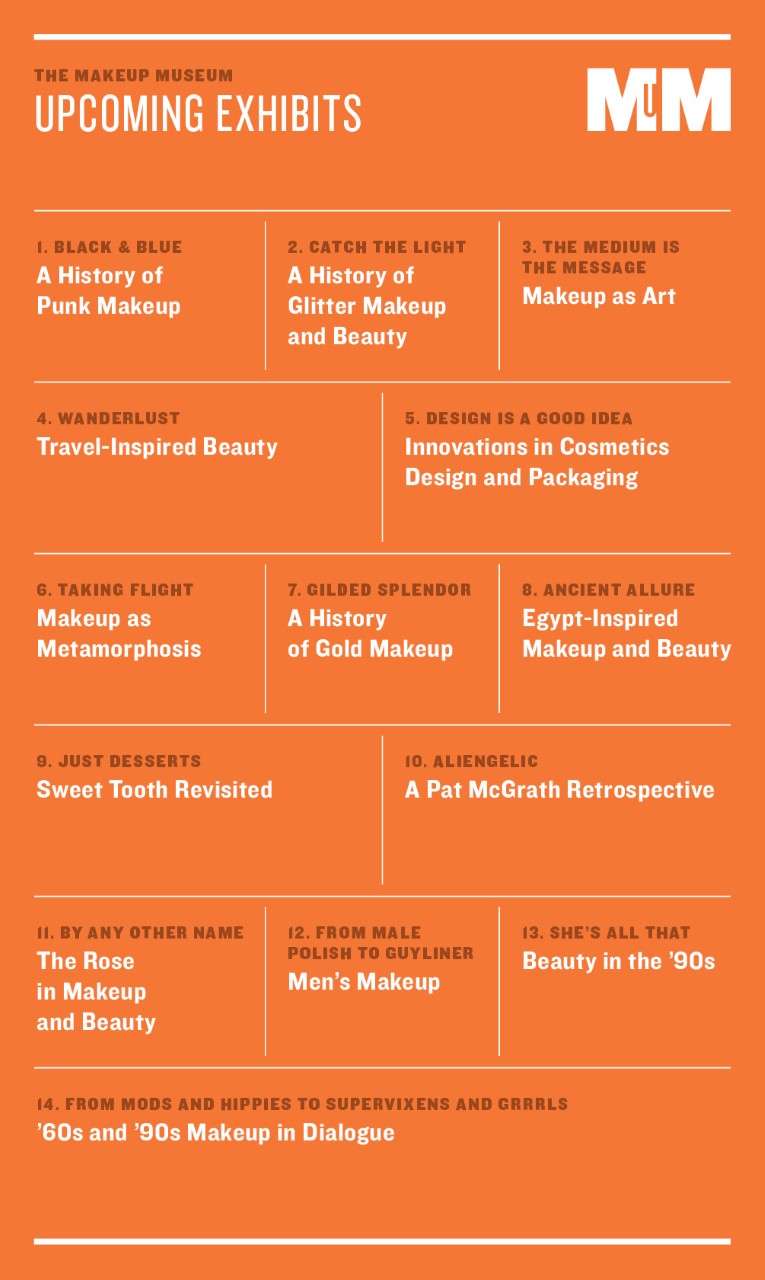
And now for all the other ideas that I'm going to try to get through on the website in 2020. Here's another graphic to help wrap my head around what topics I want to tackle this year. As you can see it gives the general categories and the number of articles in each category.

Some details:
MM Musings (3): Several huge topics, including the definition of a museum, inclusive museums, and an exploration of the process of a private collection going public.
Makeup as Muse (3): the next artists on my list are Sylvie Fleury, Rachel Lachowitz and Gina Beavers.
MM Mailbag (2-3): Too many inquiries to list! I'm still only at about 50% "solved" rate…good thing I'm not a real detective. But there were some really interesting questions in the past year or so, including ones about the history of Corn Silk powder and a travel set by Madam C.J. Walker.
Brief histories (4): zodiac-themed beauty, crystal-inspired beauty, makeup setting sprays, and how drag makeup techniques became mainstream and/or co-opted. Possibly something on colored mascara.
Trends (1): Makeup brand merchandise and swag.
Topics to revisit (3): faux freckles, non-traditional lipstick shades, cultural appropriation in cosmetics advertising.
Vintage (5): Feature on Revlon Futurama lipstick cases, research on a series of Dorothy Gray ads featuring portraits of well-to-do "society" ladies, a roundup of ads depicting women looking at their reflections (sort of a follow-up to my lipstick mirror post), a comparison of Benefit's Glamourette and Platé's Trio-ette compacts, and a history of face powder applicators.
Artist collabs (5): Only 5 so far but I'm sure there will be more! Currently I'm trying to catch up on some of last year's releases, including Brecht Evens for Mikimoto, Connor Tingley for NARS, Yoon Hyup for Bobbi Brown, and a staggering amount of Shiseido Gallery compacts and lip balms (there are 12, yes, 12 artists in all so I will have to combine several of them in one post.) Oh, and I want to start a series on the artists whose work appears on Pat McGrath's packaging.
Book reviews (3): I want to do at least 3, hopefully more. On my short list: Red Lipstick: Ode to a Beauty Icon, Style and Status: Selling Beauty to African-American Women, Viva MAC, and Sacred Luxuries: Fragrance, Aromatherapy and Cosmetics in Ancient Egypt. I also have two more tomes that have been sitting on my bookshelf for several years.
New series (3): I've been thinking about this for years, ever since I did my fantasy Broad City makeup collection. This would be a series discussing artists whose work I want to see on makeup packaging, complete with mock-ups. The reason I haven't done it yet is because I lack the technical skills to make said mock-ups, but hopefully I'll figure out a work-around.
Color Connections (?): I'd love to return to Color Connections. It's such a fun, albeit time-consuming series.
I'm sure there will be some surprises along the way – I think some guest posts and interviews will make an appearance here.
Finally, my book ideas. These are not new…I do hope to find some time to start writing all three. I have outlines and chapters for each but that's about it. The first one is an alternate title for the '90s exhibition. The second one you can find a description of in this post. And the last one, well, I still want to do the damn coffee table book of pretty makeup. We're going on 14 years that I've been wanting to publish it!
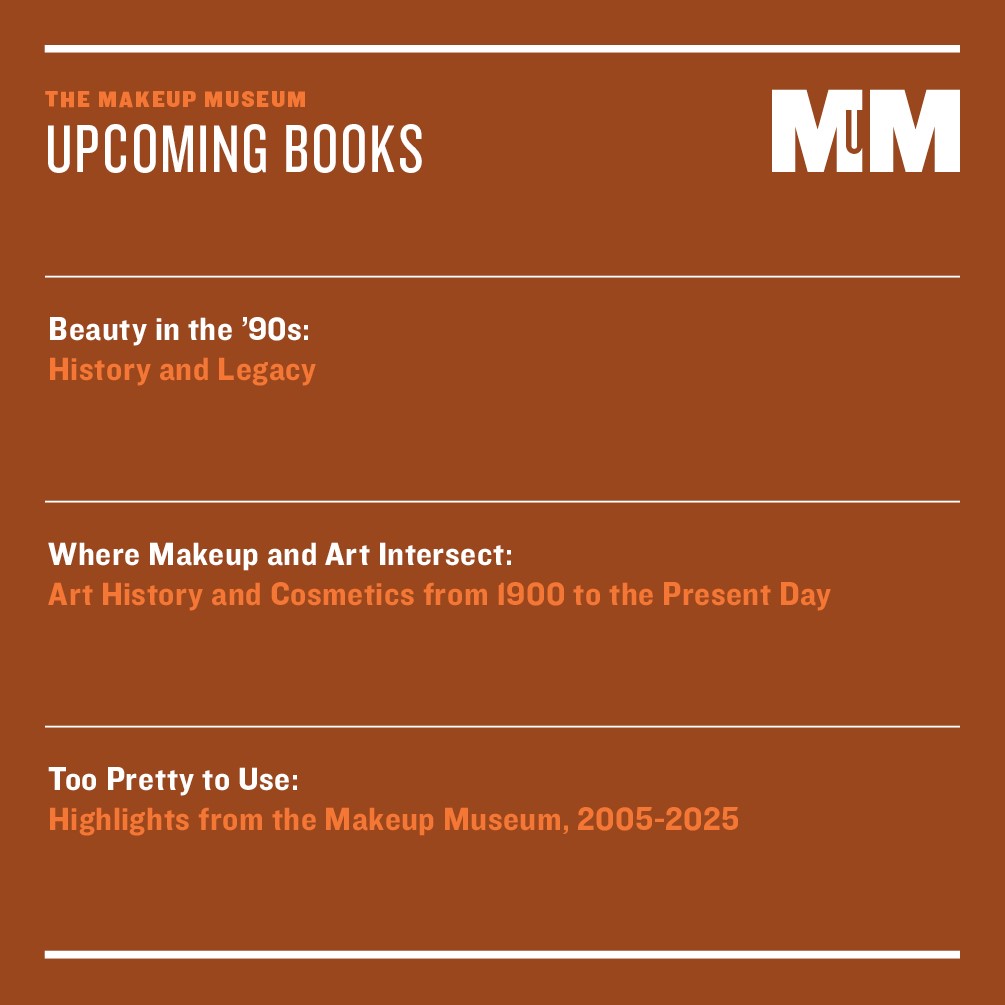
So those are all the ideas I have swirling about in my brain at the moment. They are subject to change as I'm sure I'll think of more but at least I've laid out the current ones. Please let me know in the comments which exhibitions and topics you want to see first! And if you'd like to help with any definitely let me know. Book-writing tips are especially needed. 😉
The Makeup Museum is operated solely by the Founder and Curator. Maintaining and expanding a world-class cosmetics museum is a demanding job for one person. If you love what the Museum does and would like to see it continue, here are some (mostly free!) ways to get involved.
The Museum reserves the right to decline any contribution, donation, monetary gift or offer of volunteering if the contributor’s values and interests do not align with those of the Museum.
Volunteer
The Makeup Museum is looking for individuals who are passionate about its mission to donate their time on a volunteer basis. If you would like to assist with editing and proofreading, social media/PR strategy, advising on curatorial best practices or museum operations and planning in general, please email the Curator. No monetary compensation can be offered, but you will be fully credited for your contributions. As the Museum is primarily an online space, location is obviously not an issue – you can volunteer from anywhere!
Social Media and Outreach
Online support is essential to increasing the Makeup Museum’s visibility and solidifying its position as the world’s leading cosmetics museum. Please follow and engage with the Museum on Instagram, Twitter and Facebook and subscribe to the Museum’s blog via email alerts or the RSS feed. Follows, likes and comments on social media posts are key to the Museum’s growth. Sharing Museum content (articles, exhibitions, etc.) with your social media networks as well as editors, journalists, historians and museum professionals is also integral to the Makeup Museum’s expansion.
Donate
The Makeup Museum gratefully accepts donations of vintage cosmetics and related objects or materials (tools, ads, displays, archives or personal papers from makeup companies/artists, etc.) in good to excellent or new condition. These include all beauty categories except for fragrance, skincare, hair and personal hygiene products. Contemporary makeup items are accepted as well, but must be new or like new. You can visit the Curator’s wishlist for specific items that the Museum is actively seeking to acquire. Offers of objects that aren’t included there are still greatly appreciated, so please send an email with photos of anything you’d like to offer. Donations are accepted at the Curator’s discretion; please do not be offended if your donation is not accepted. Note: The Museum is unable to reimburse for shipping and additional related costs, such as packing supplies, transportation to/from a post office, etc.
Contribute
Have a great makeup history tale to tell? Do you want to show off a makeup object or collection? Email the Curator if you’d like to be featured at the Museum’s website. Guest post and interview opportunities are also available. If you’re a museum or makeup professional/enthusiast who’d like to share your perspective on a given topic, or if you’d like to write an article on vintage or contemporary objects, brands or trends, please get in touch.
Give
If you are able, the Makeup Museum gratefully welcomes monetary donations in any amount. Gifts do not support artifact acquisitions; those are purchased with the Curator’s personal funds. Gifts are used instead to support the following areas:
- Digitization – website redesign, professional object photography, and collections management software that allows a searchable database of all objects to be published online;
- DEI initiatives – hiring of BIPOC and LGBTQ+ consultants, writers and historians;
- Research – subscription fees to various archives/trade journals and fees for external researchers (as needed);
- Preservation – purchase of archival storage materials;
- Operating expenses – annual professional membership dues, blog and domain name renewal costs.
The Makeup Museum, Inc. is a 501 c3 nonprofit. Your contribution is tax-deductible.
 Links and other bits for the second month of 2020.
Links and other bits for the second month of 2020.



































































































